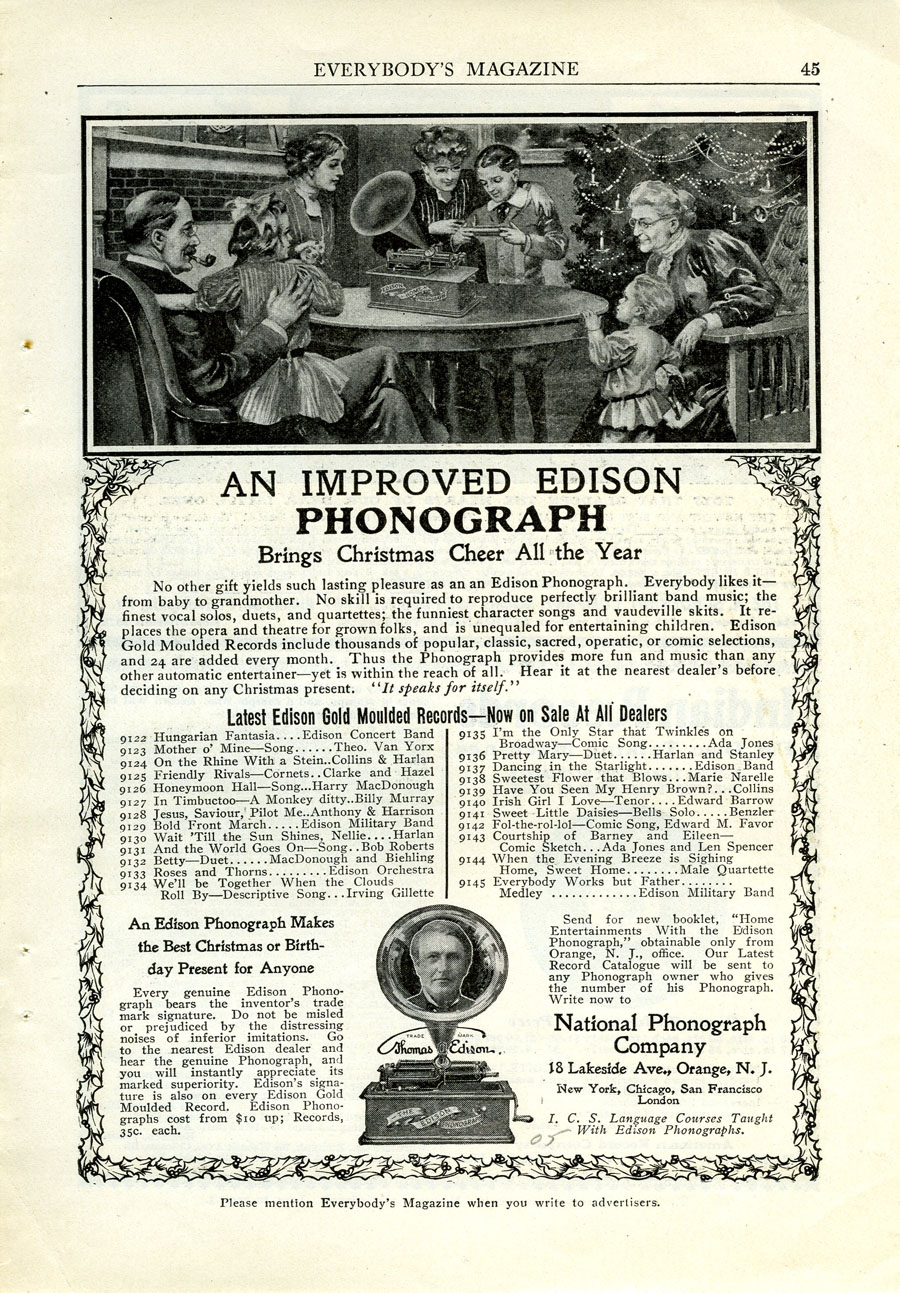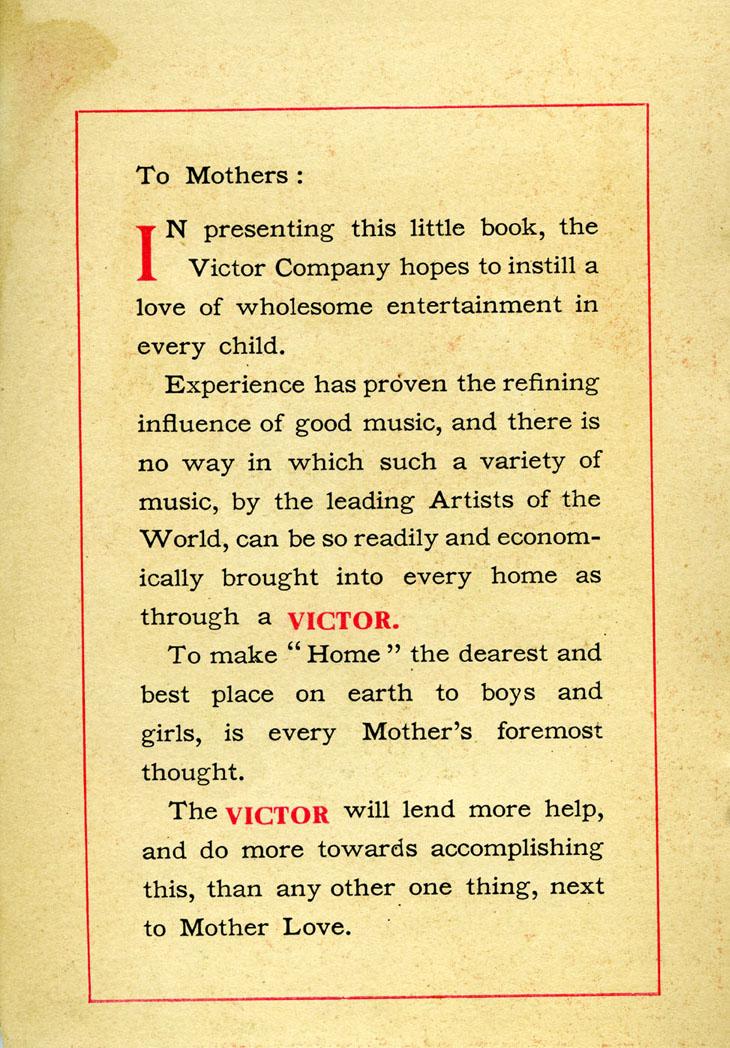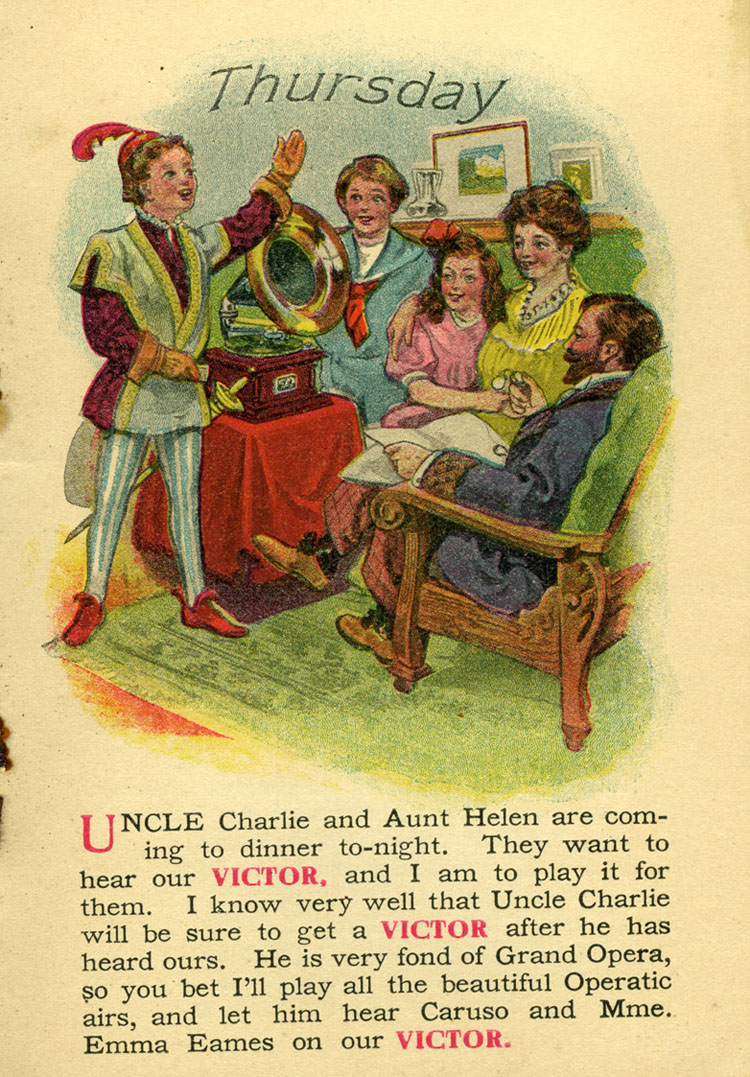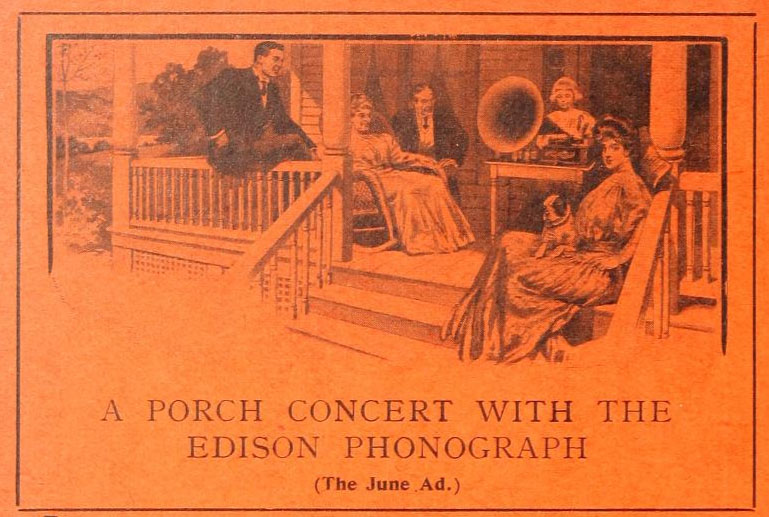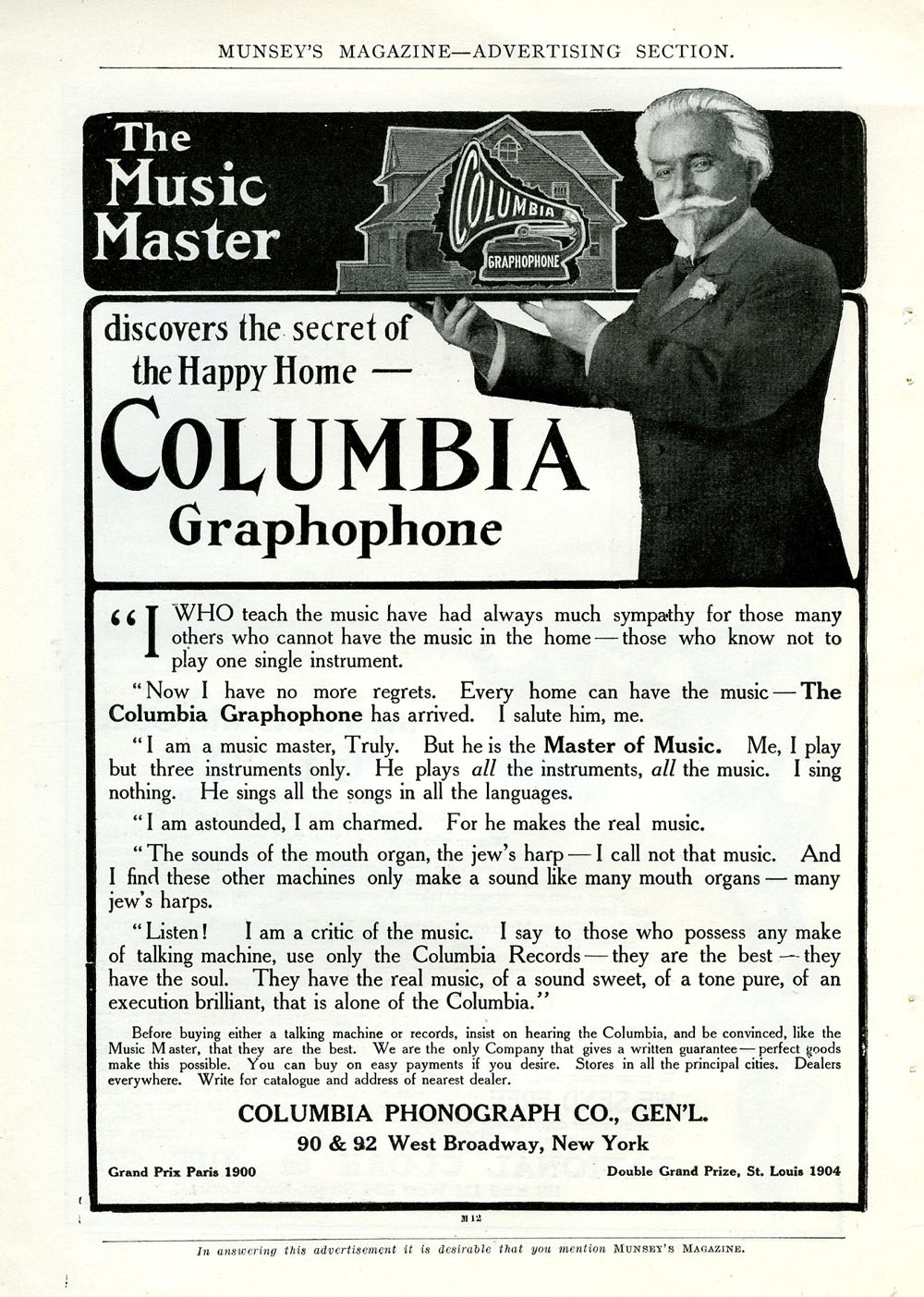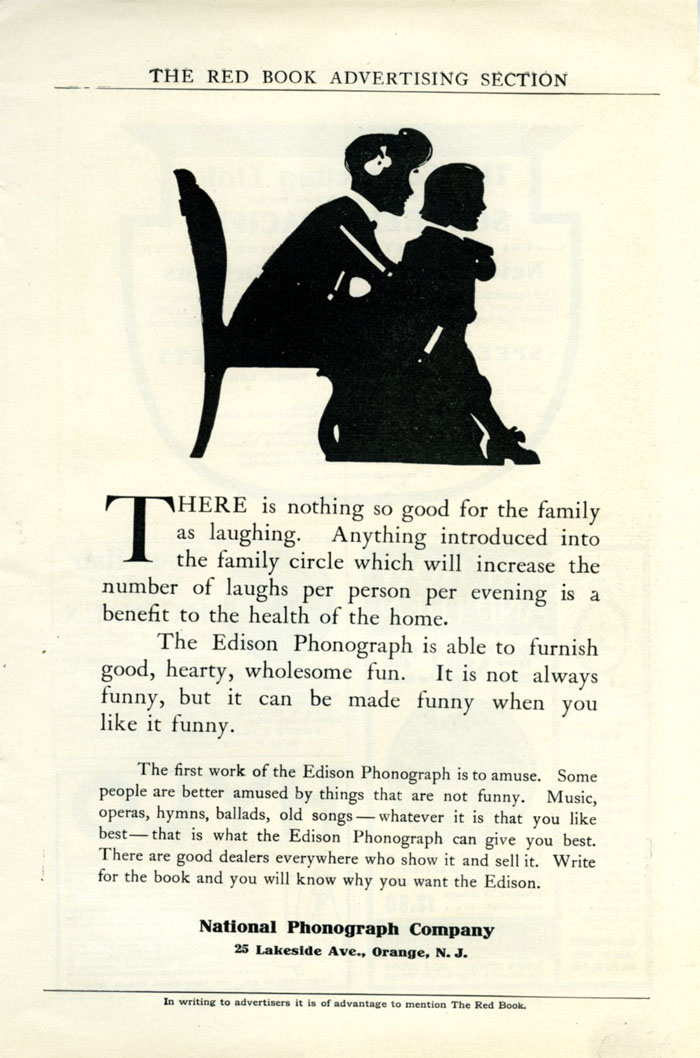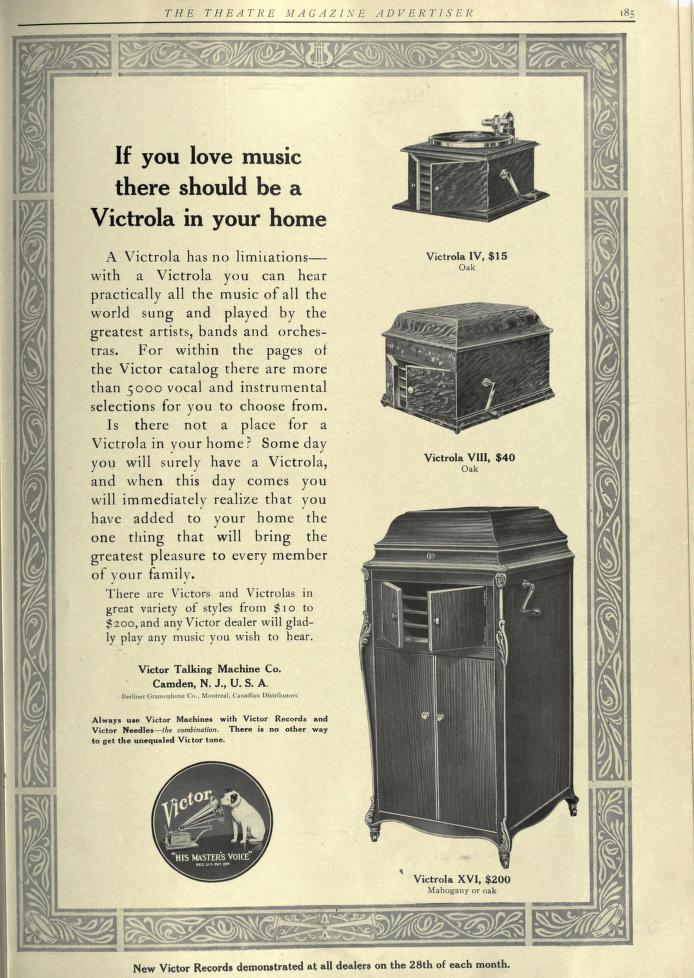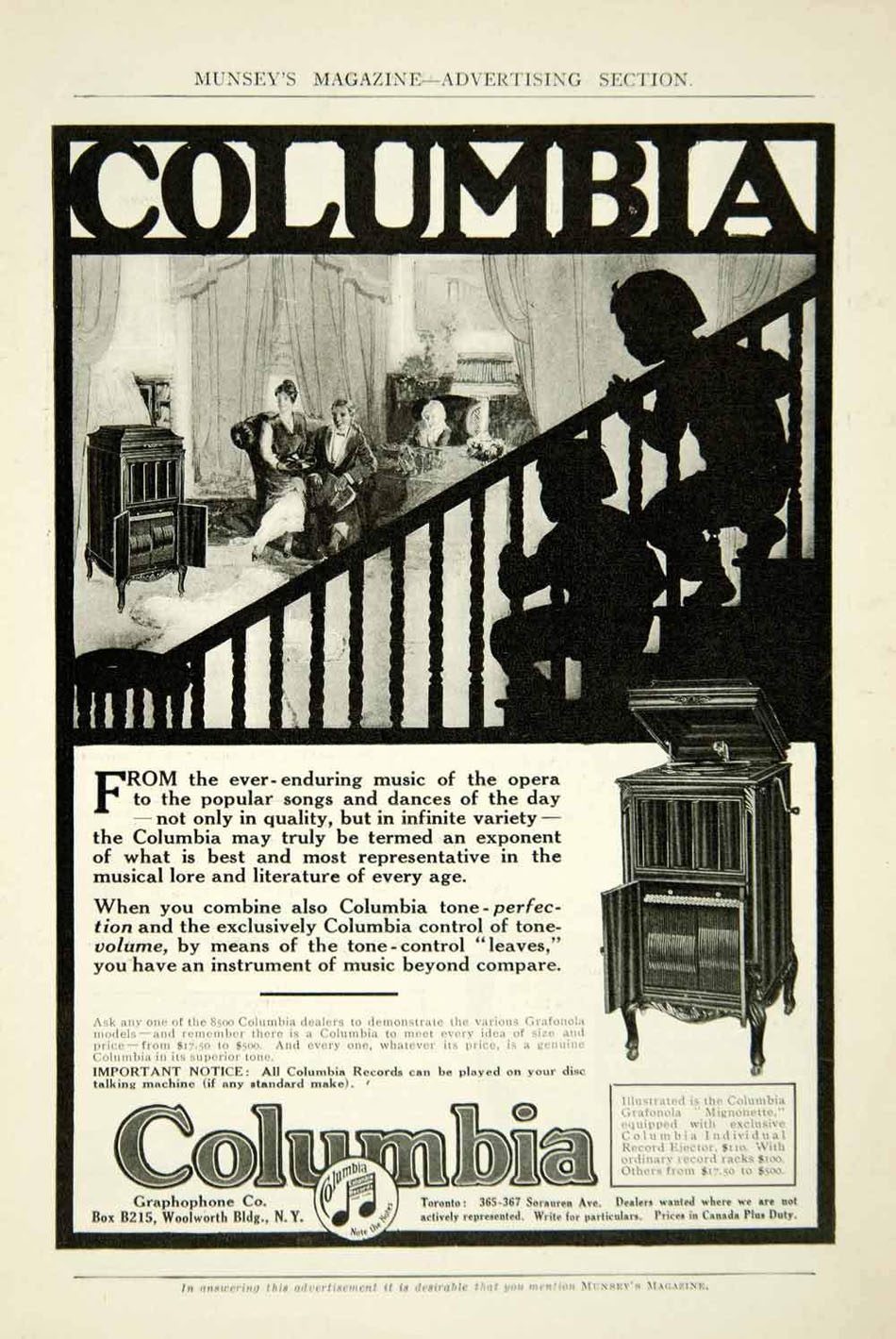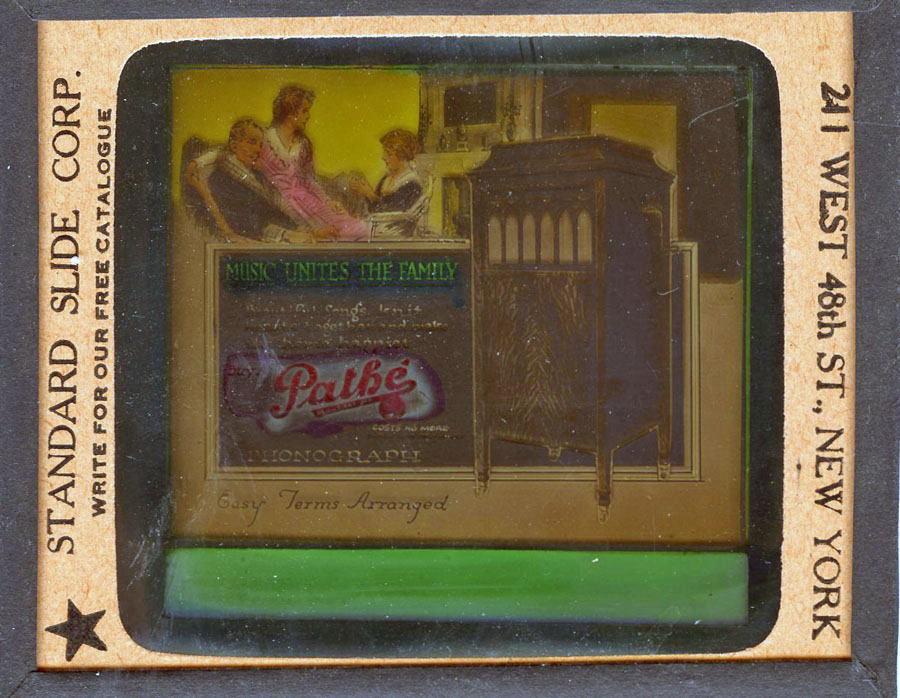The Phonograph and Happy Homes
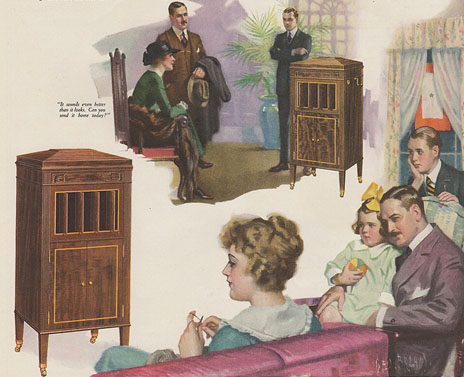
Phonograph advertisements with scenes
of the happy family gathered around the phonograph and every member
enthralled by whatever was playing was a pervasive advertising image.
Promoted for its variety and unlimited entertainment there was something
for everyone.
As a family entertainer it "is
the favorite of all home folks, big and little" and "is
surely needed--with its promise of many happy musical years to come."
"Everybody likes it -- from baby
to grandmother."
"Fortunate are the homes"
where the phonograph and its "gift of beautiful music"
has entered the home.
In the following ads the happiness
of the home is displayed with the phonograph providing joy, pleasure,
contentment, and satisfaction. Each ad "speaks for itself"
and supports the seemingly definitive answer to the question what
is the best gift for the whole family.
Everybody's Magazine, December
1905 (PM-0881)
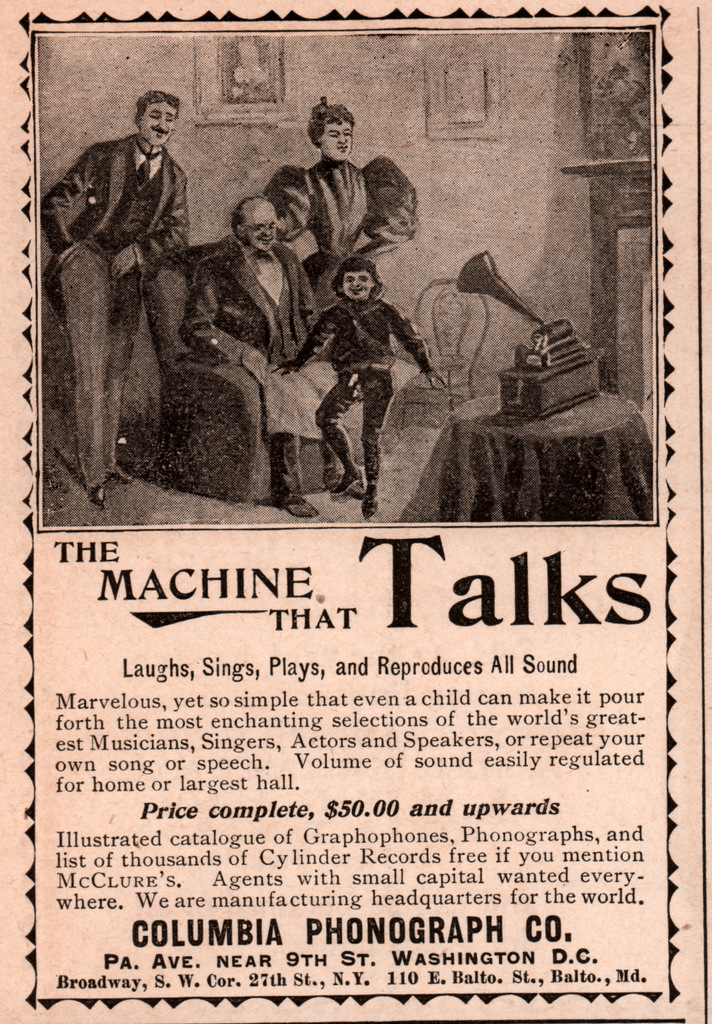
1896
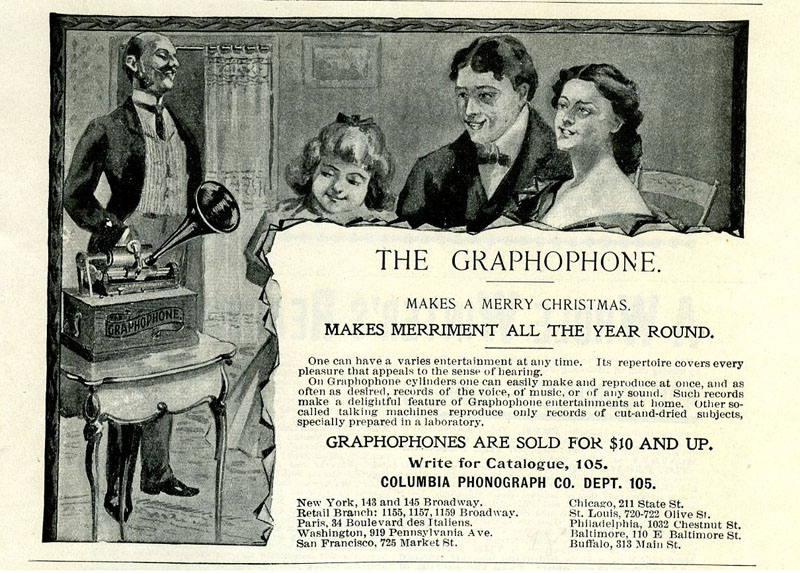
"The Graphophone Makes Merriment
All the Year Round." Ainslee's Magazine, November 1898
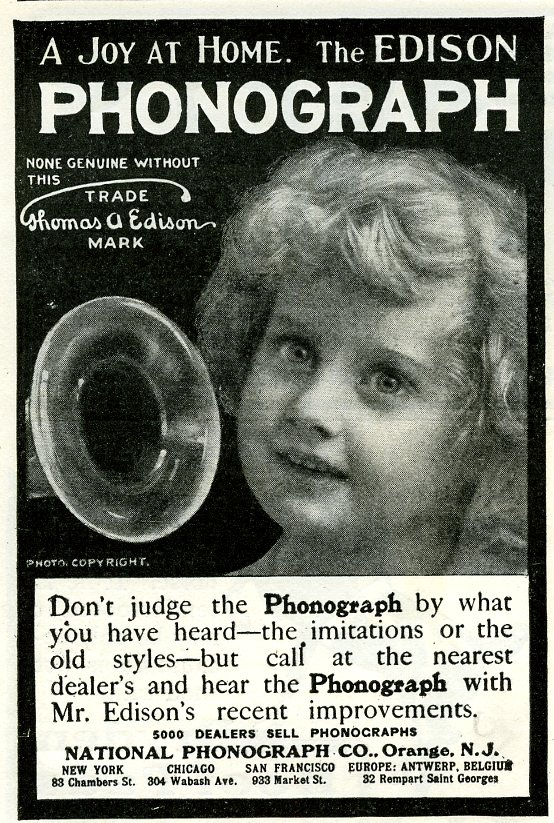
"A Joy at Home." The
Saturday Evening Post, November 21, 1903 (1/12 page ad)
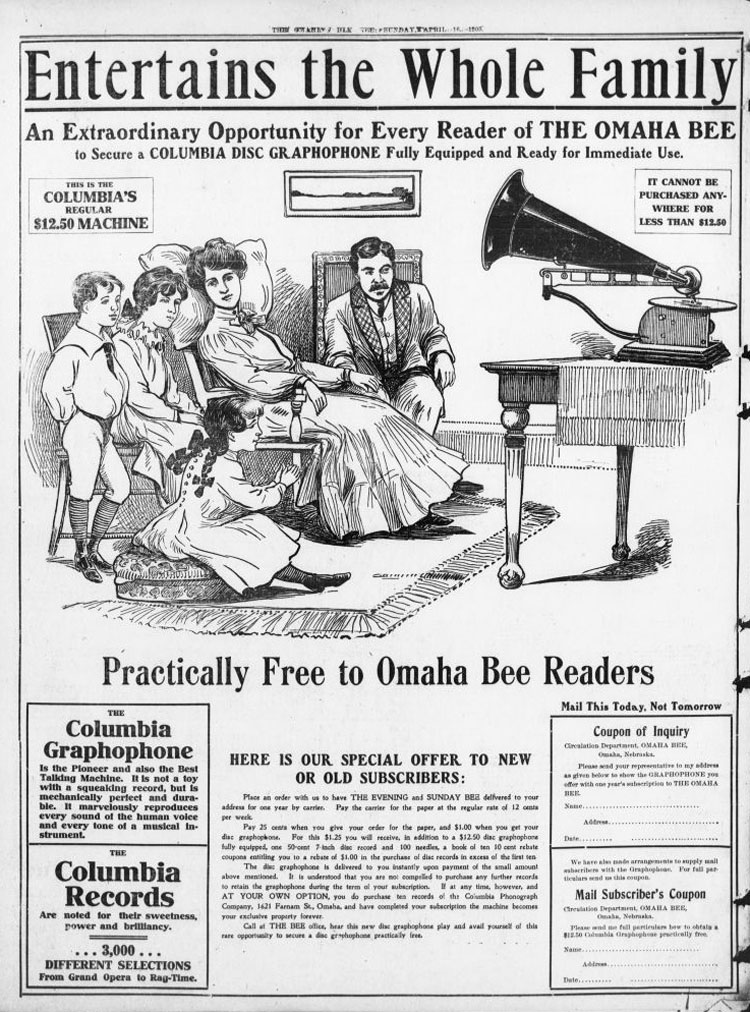
"Entertains the Whole Family,"
Omaha Bee newspaper, April 16, 1905
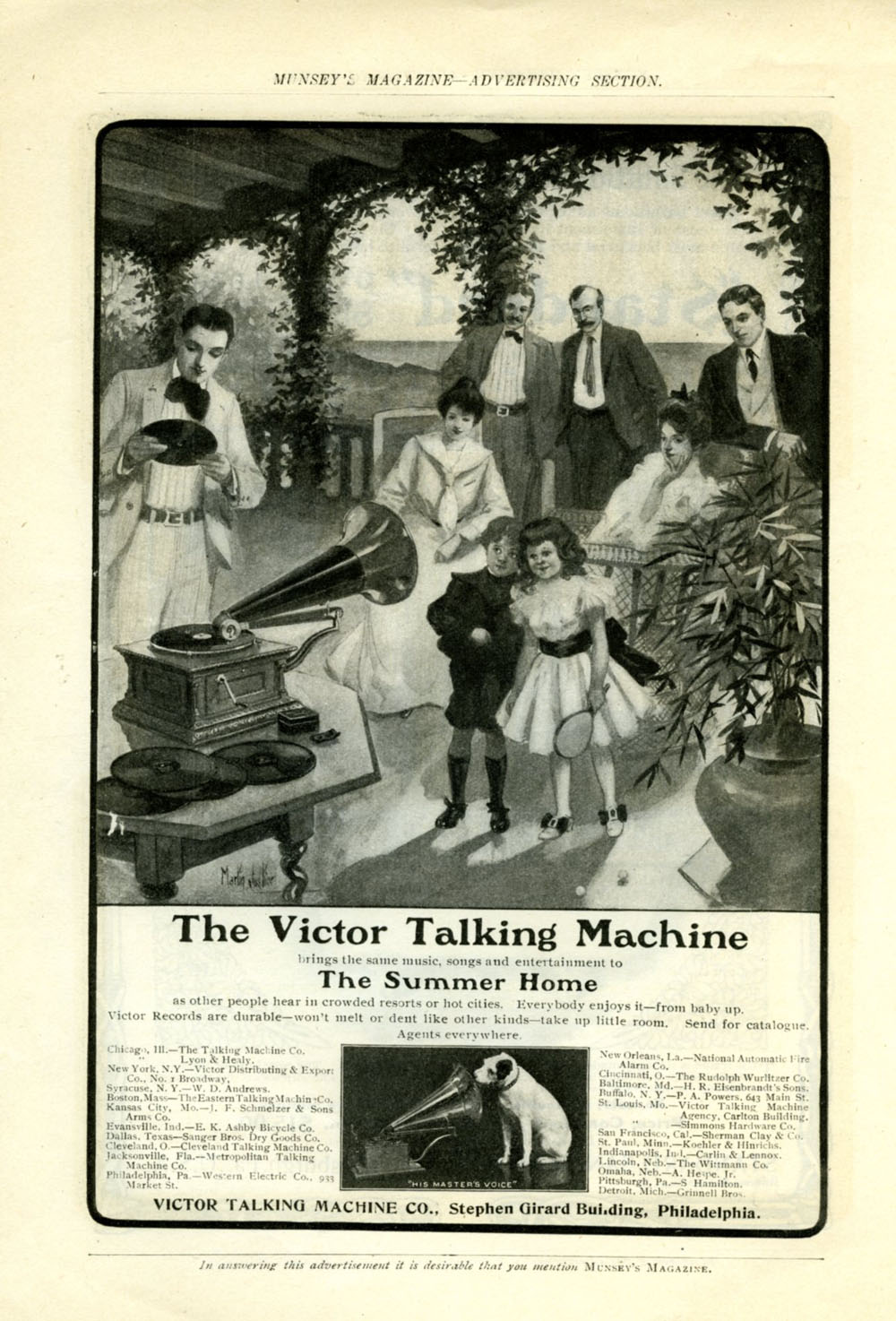
"Everybody enjoys it--from
baby up." Munsey's Magazine 1902
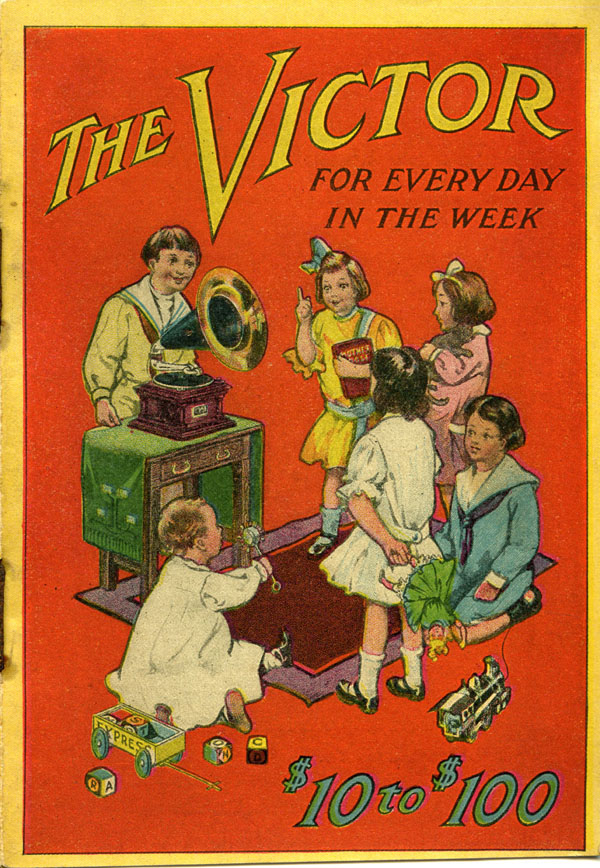
The Victor Talking Machine's promotional
brochure "The Victor for Every Day in the Week" starts
by addressing Mothers on the importance of instilling a love of
wholesome entertainment in every child: "Good music has been
proven to accomplish that goal and making "Home the
dearest and best place on earth to boys and girls," and the
Victor "next to Mother Love" will do more towards accomplishing
this than any other thing."
The Victor for Every Day In the
Week, c.1906
The Talking Machine
World, June
15, 1906 with an Edison ad promoting what Edison was using in
periodicals for June 1906.
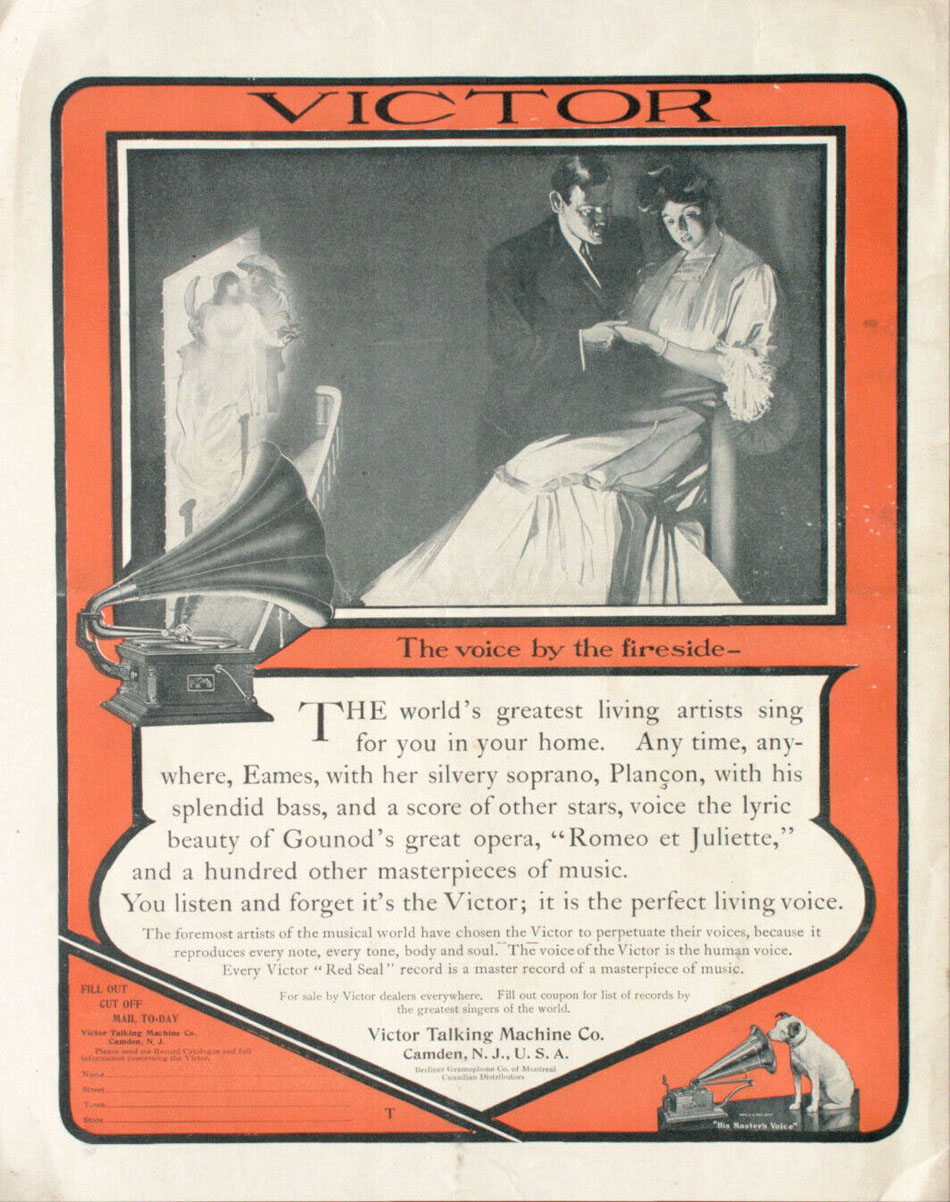
"The voice by the
fireside" - "You listen and forget it's the Victor"
1906 (PM-1365)
"The Secret
of the Happy Home - A Columbia Graphophone," Munsey's Magazine,
1906. "Before buying either
a talking machine or records, insist on hearing the Columbia, and
be convinced, like the Music Master, that they are the best."
"There is nothing
so good for the family as laughing...The Edison Phonograph is able
to furnish good, hearty, wholesome fun." 1906, The Red Book
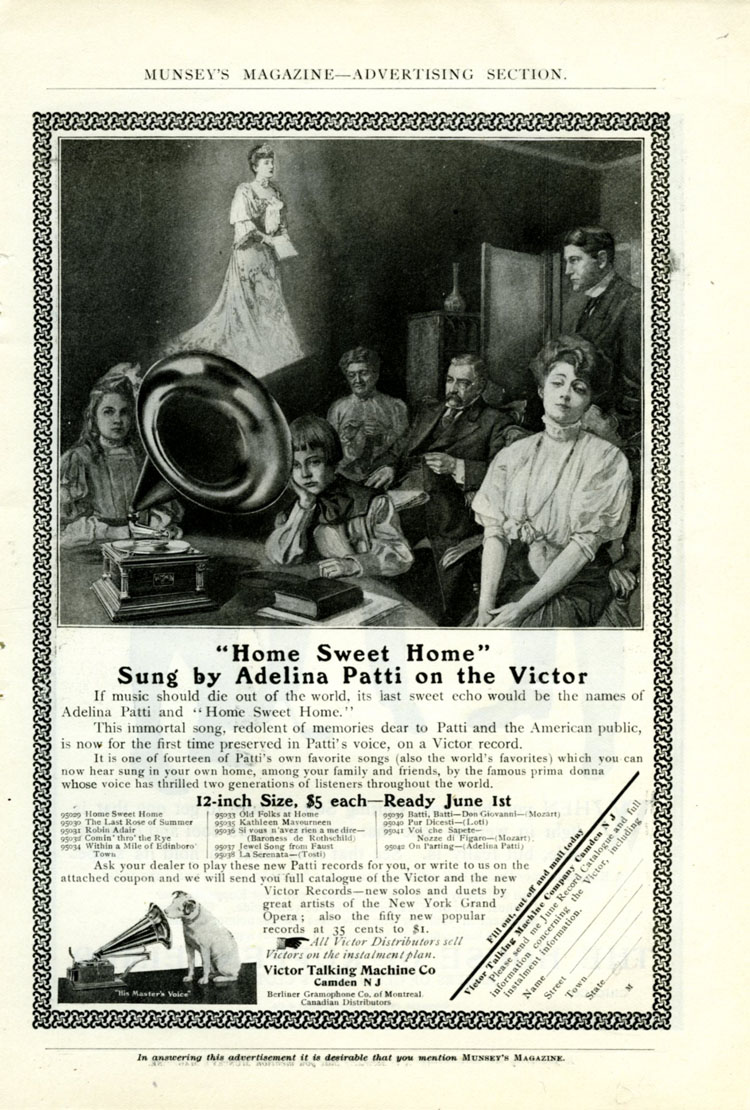
"Home Sweet Home,"
Munsey's Magazine, 1906
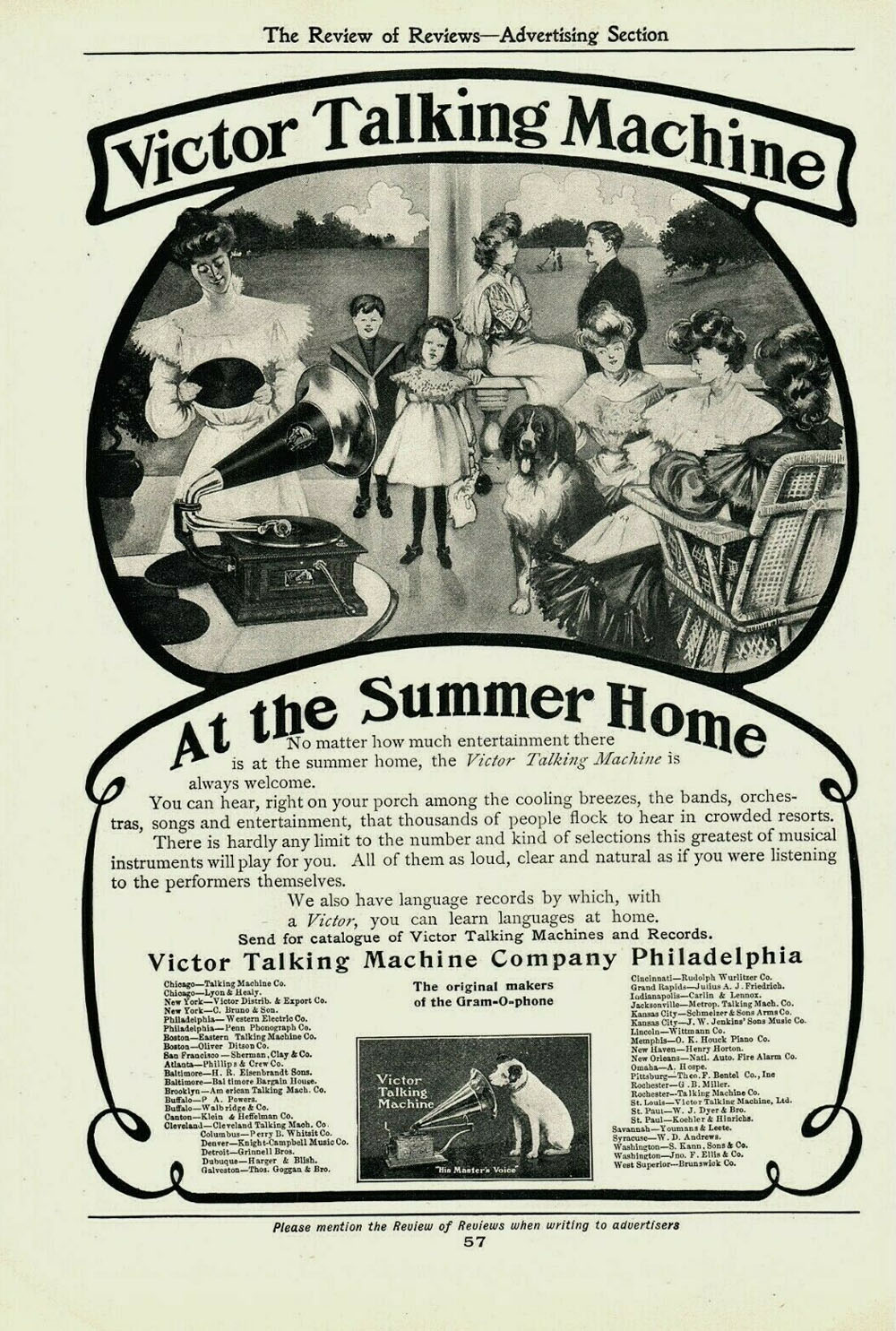
At the Summer Home,
1906
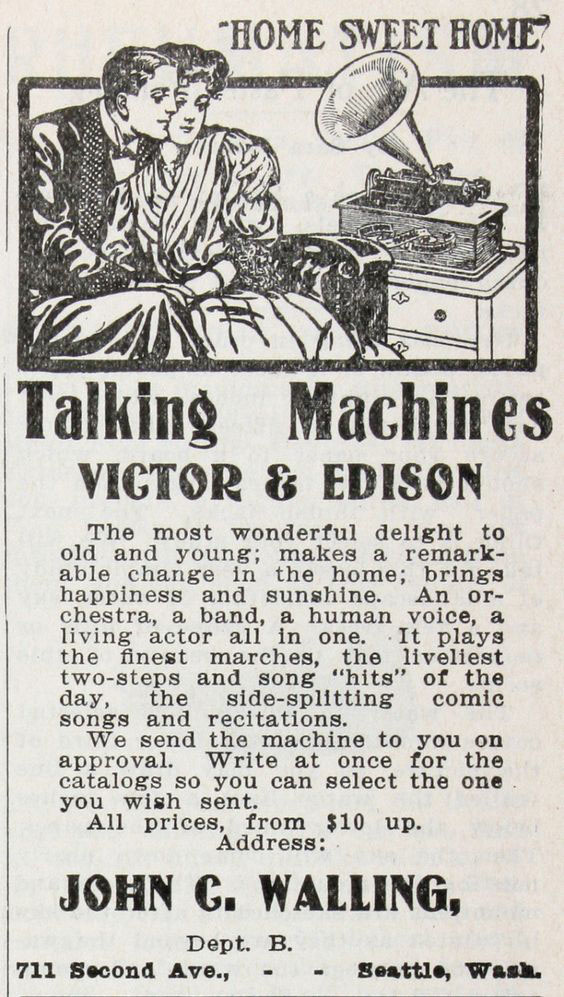
"Home Sweet Home,"
1907
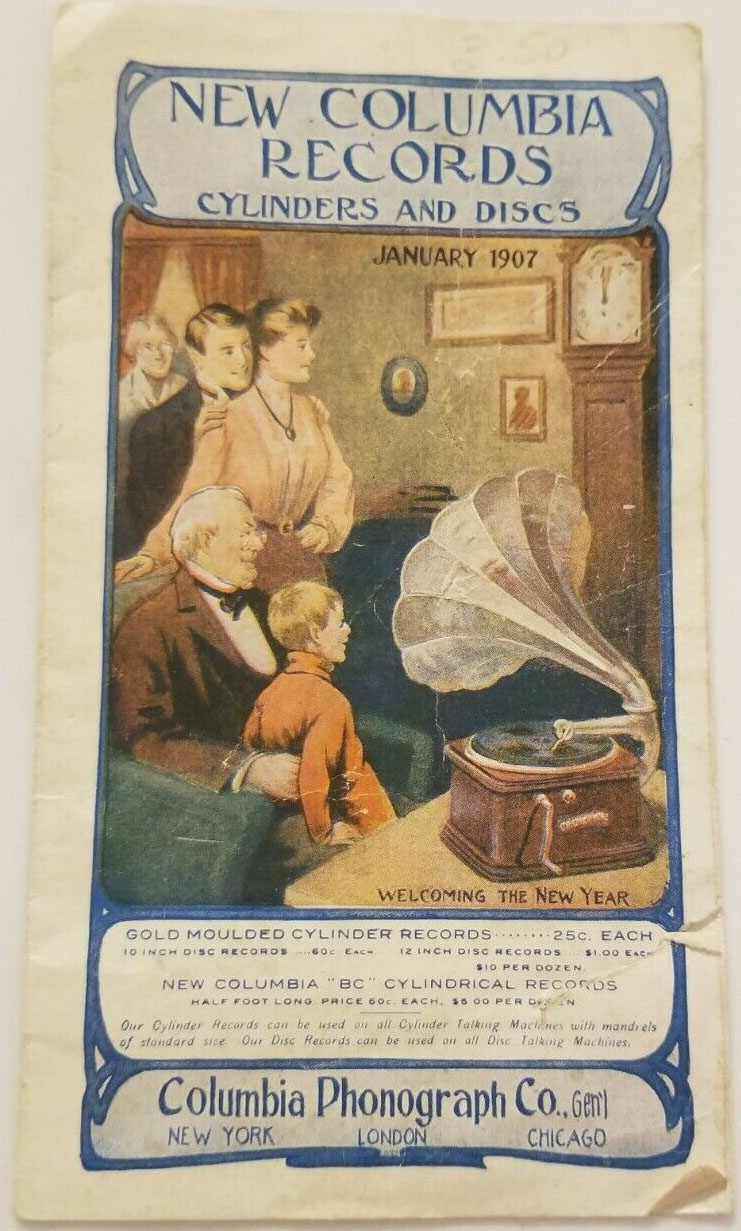
Columbia Record Catalogue,
January 1907
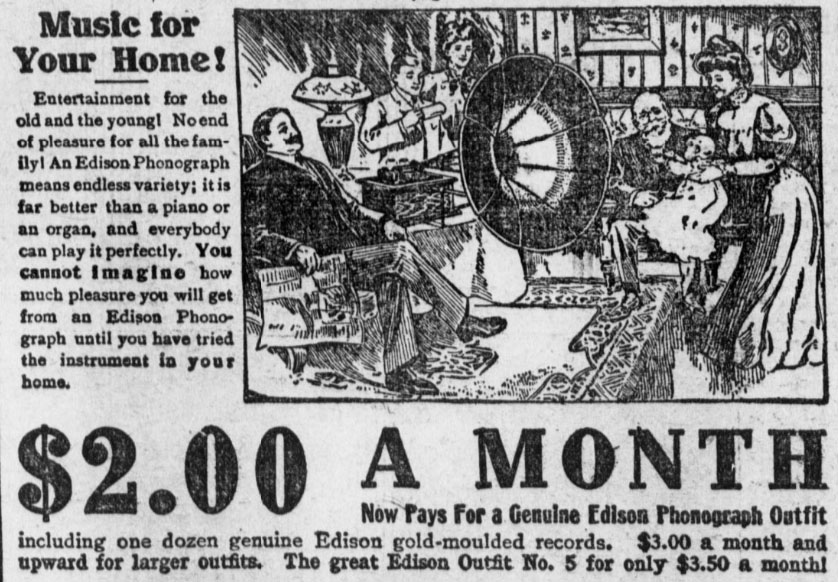
"No end of pleasure for all
the family!"1907 Newspaper
ad, The
Commoner (courtesy University
of Nebraska-Lincoln Libraries, Lincoln, NE)
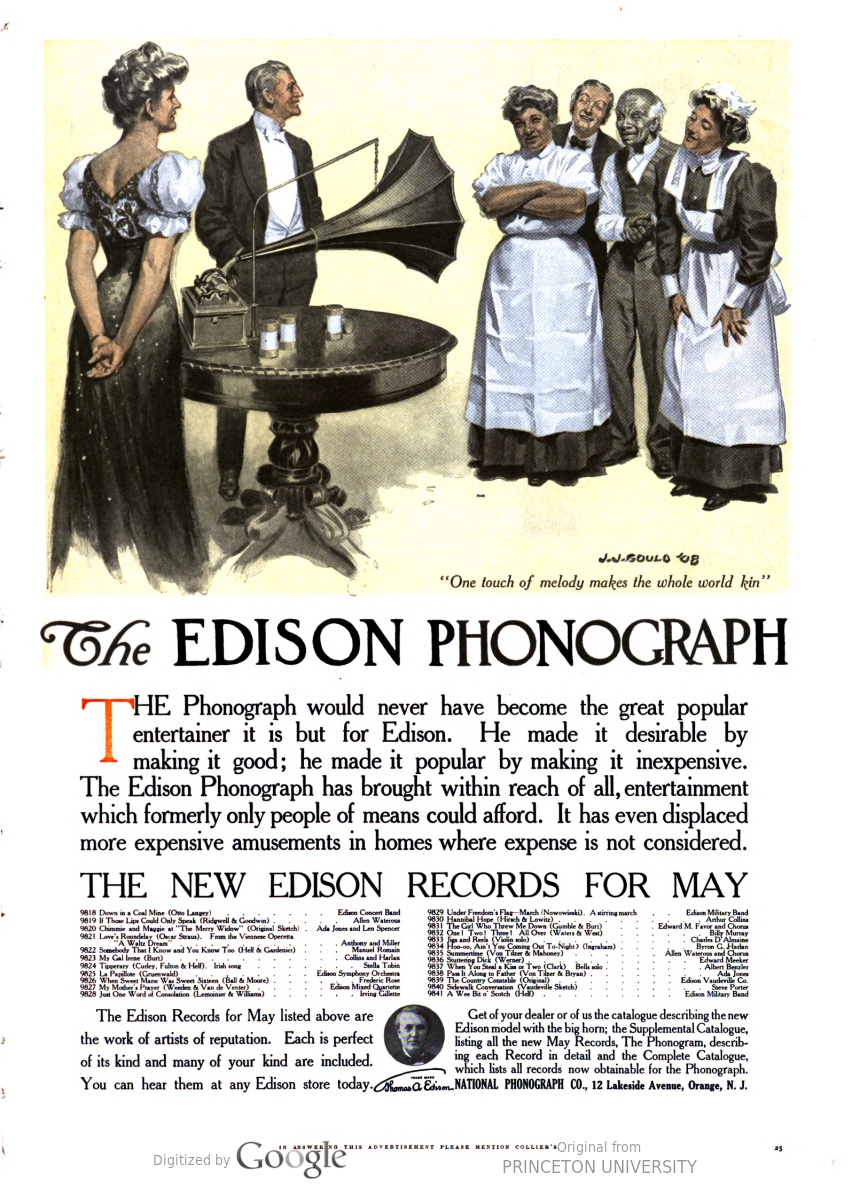
"One touch of melody
makes the whole world kin" by J. J. Gould, Colliers, 1908

The child that is absolutely
happy..."every mother...should have an Edison Phonograph."
Colliers, 1908

"Everybody's Happy",
The Saturday Evening Post, 1911
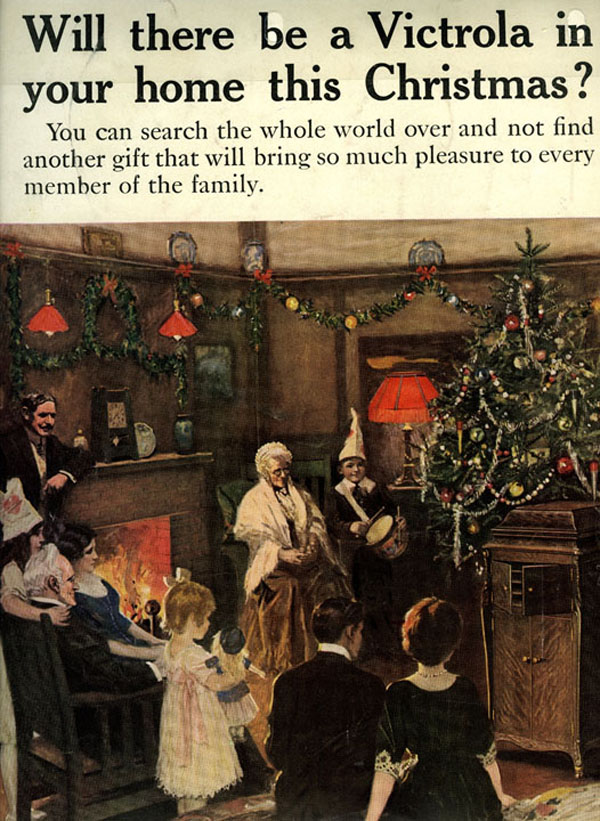
Not "another gift
will bring so much pleasure to every member of the family." c.1911
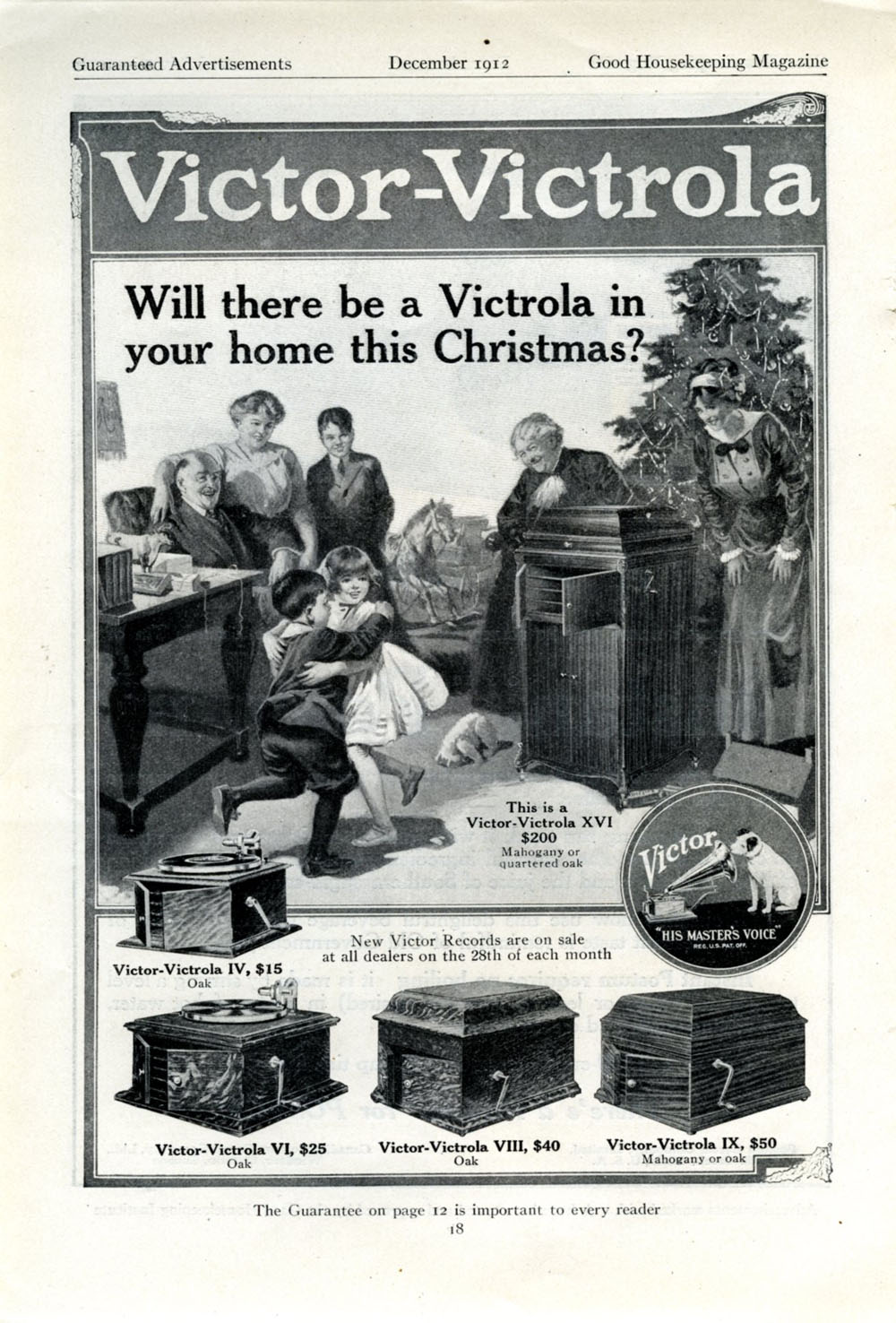
Good Housekeeping Magazine,
December 1912
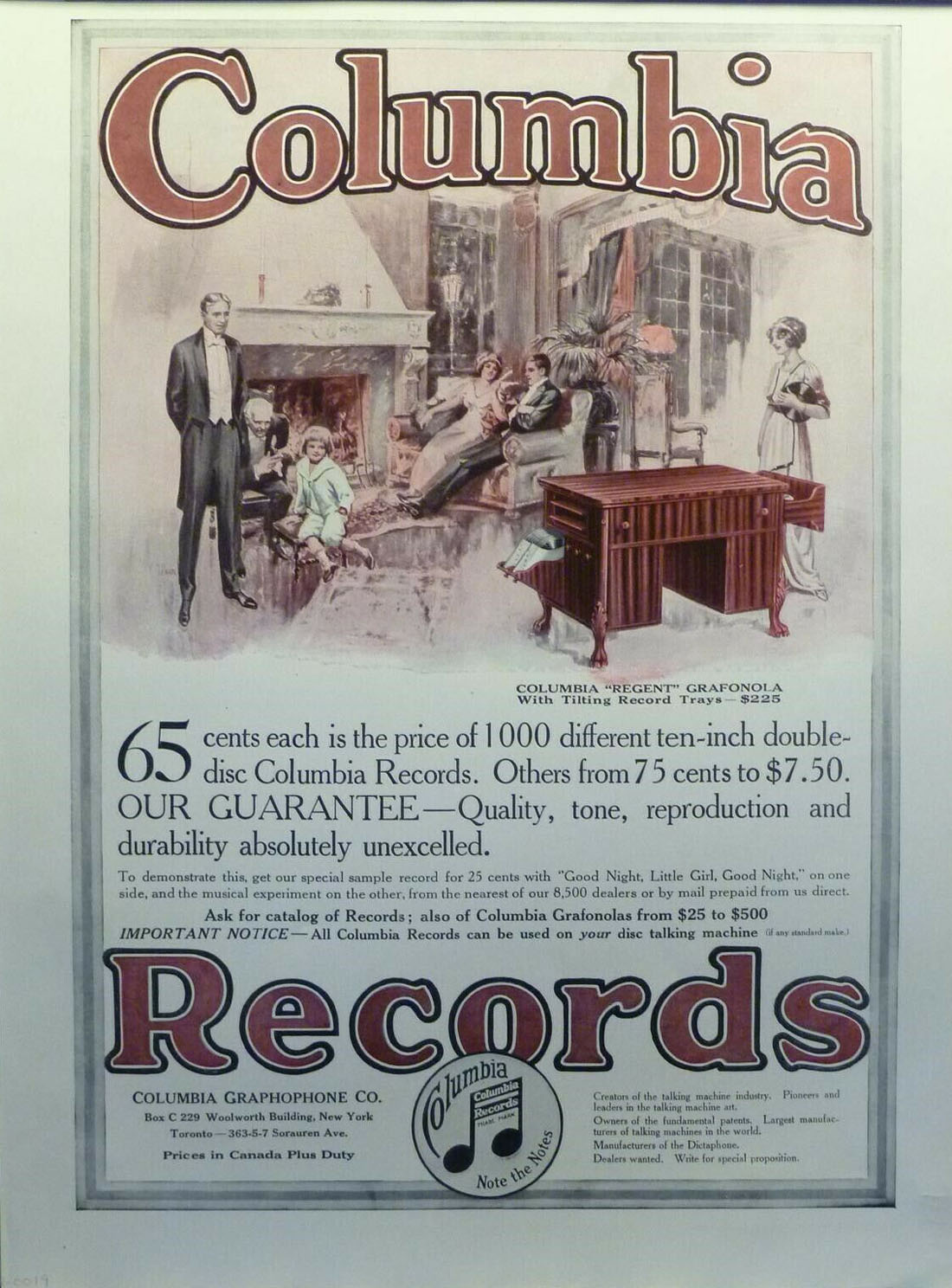
Elegance and the comfort of home
- Columbia 1914
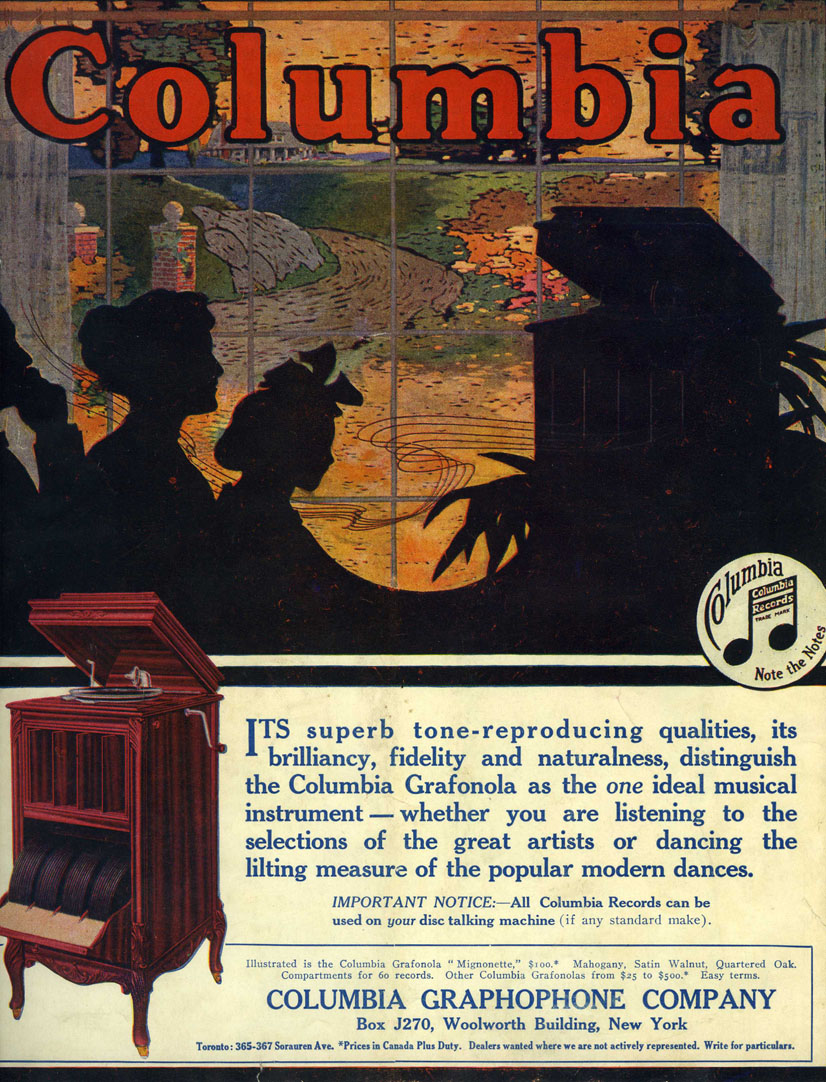
Life, 1914 (PM-2059)
The Victrola "will
bring the greatest pleasure to every member of your family."
The Theatre Magazine, October
1914.
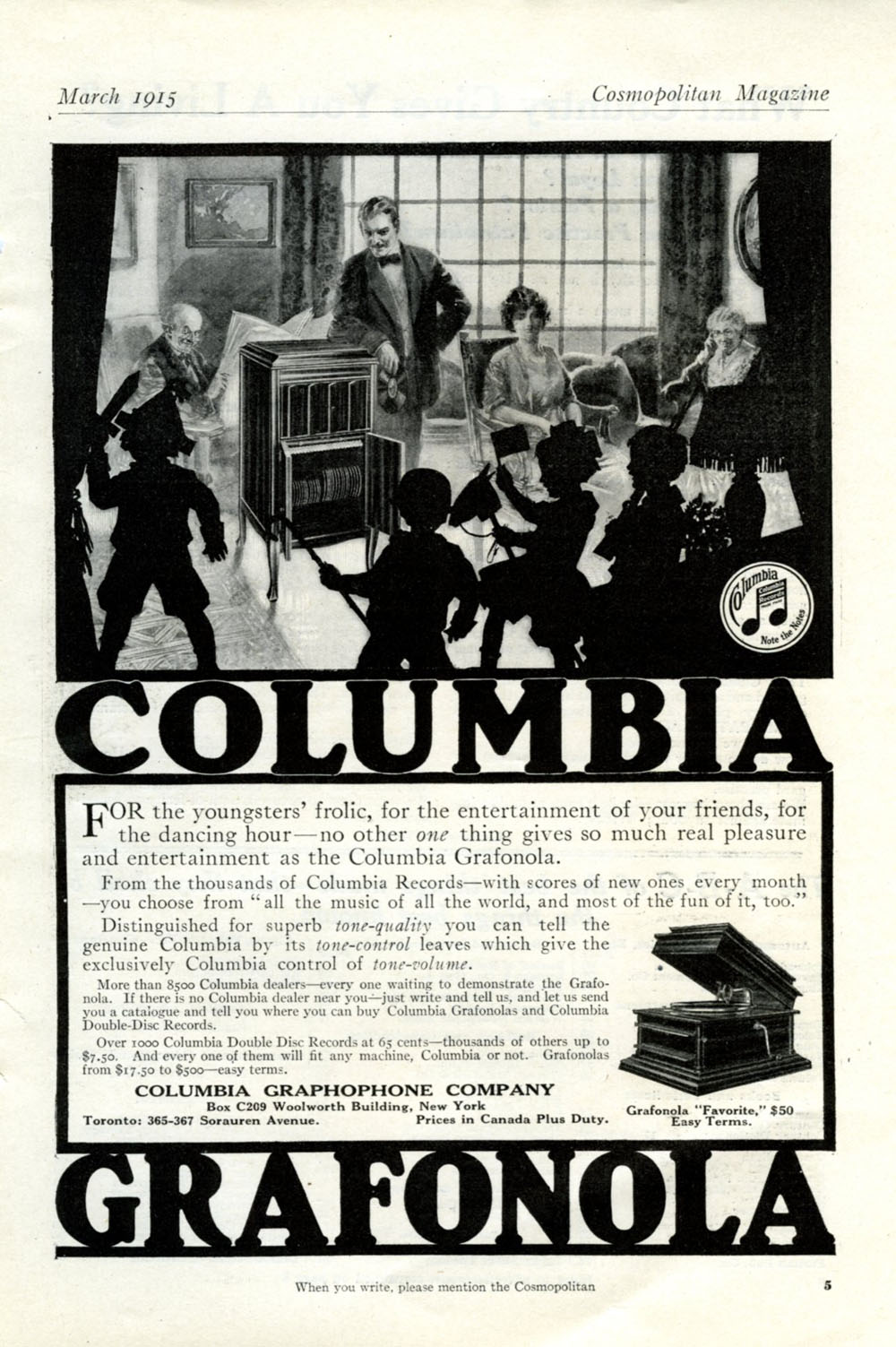
"For the youngsters'
frolic, for the entertainment of your friends, for the dancing hours..."
Cosmopolitan, March 1915
In quality and "in
infinite variety -- the Columbia may truly be termed an exponent of
what is best and most representative in the musical lore and literature
of every age." Munsey's 1915.
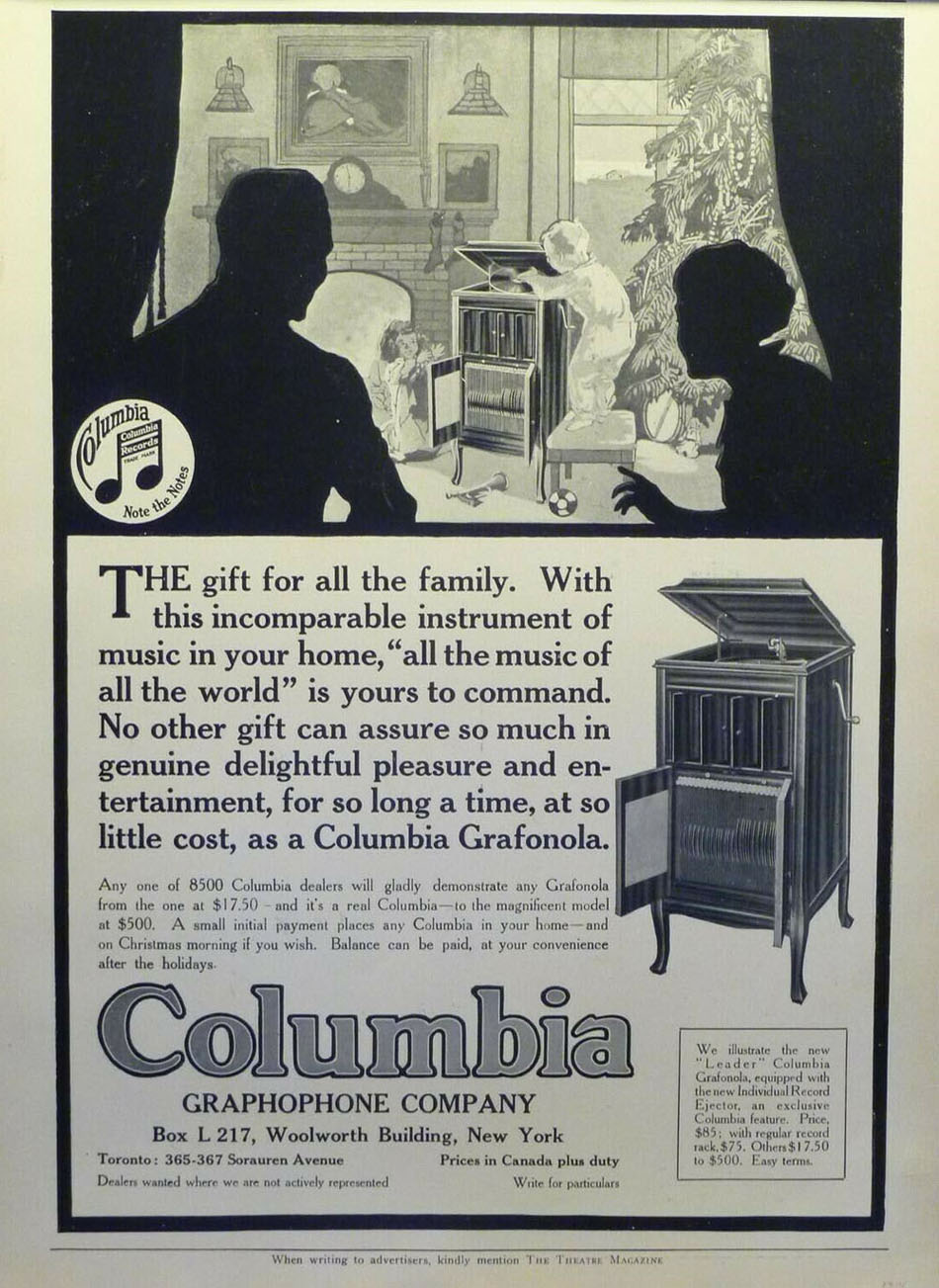
"The gift for all the family."
The Theatre Magazine, December, 1914

No other gift "will
bring so much pleasure to every member of the family." The
Theatre Magazine, December, 1914

The
Theatre Magazine, March, 1915
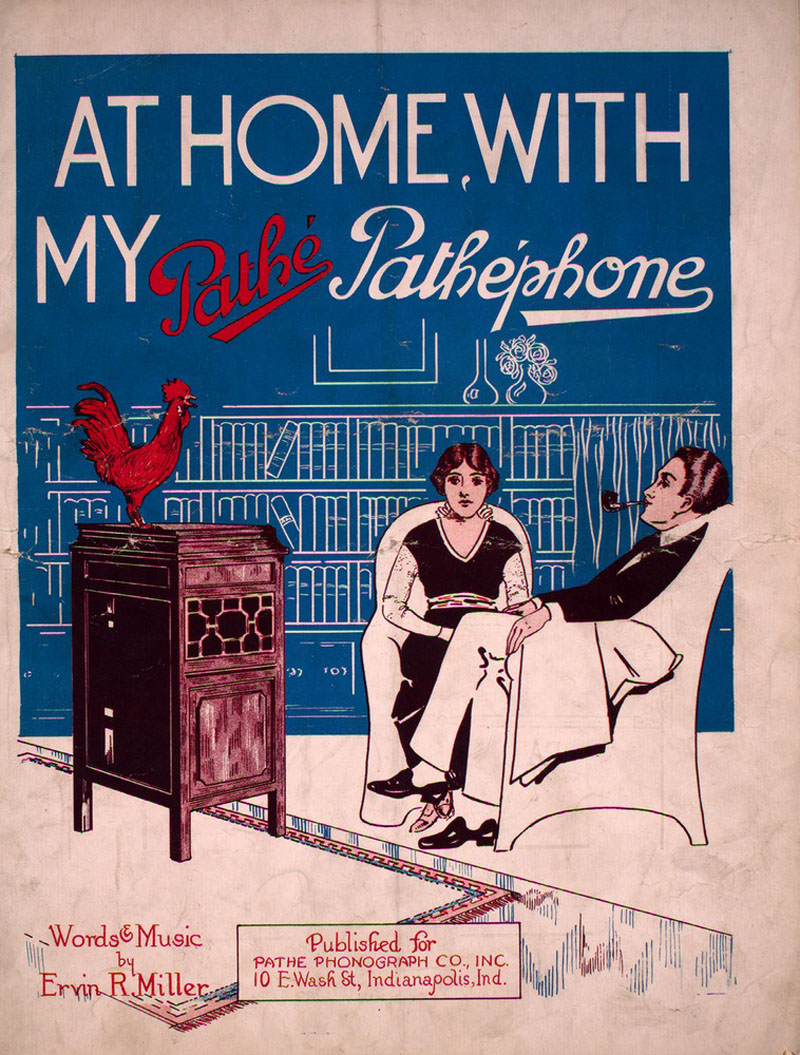
Sheet music courtesy of The Lester
S. Levy Sheet Music Collection, Johns Hopkins University.
This 1916 sheet music, At
Home With My Pathe Pathéphone,
was essentially an advertisement for Pathé and for the happy
home -- "it's home, sweet home for mine" made possible
by a phonograph.
"They talk about the pleasures
of the picture show, But it's home for mine,
They rave about their clubs and
such, of course, they're fine, But home is where I shine."
"Take it in the ev'ning when
the day is done, That's the time that I can have a little fun.
A playing on my Pathé Pathéphone,
My Pathé phone --- oh, catch that tone."
"All the Music of
All the World" -- into your home today. Columbia Graphophone,
1916
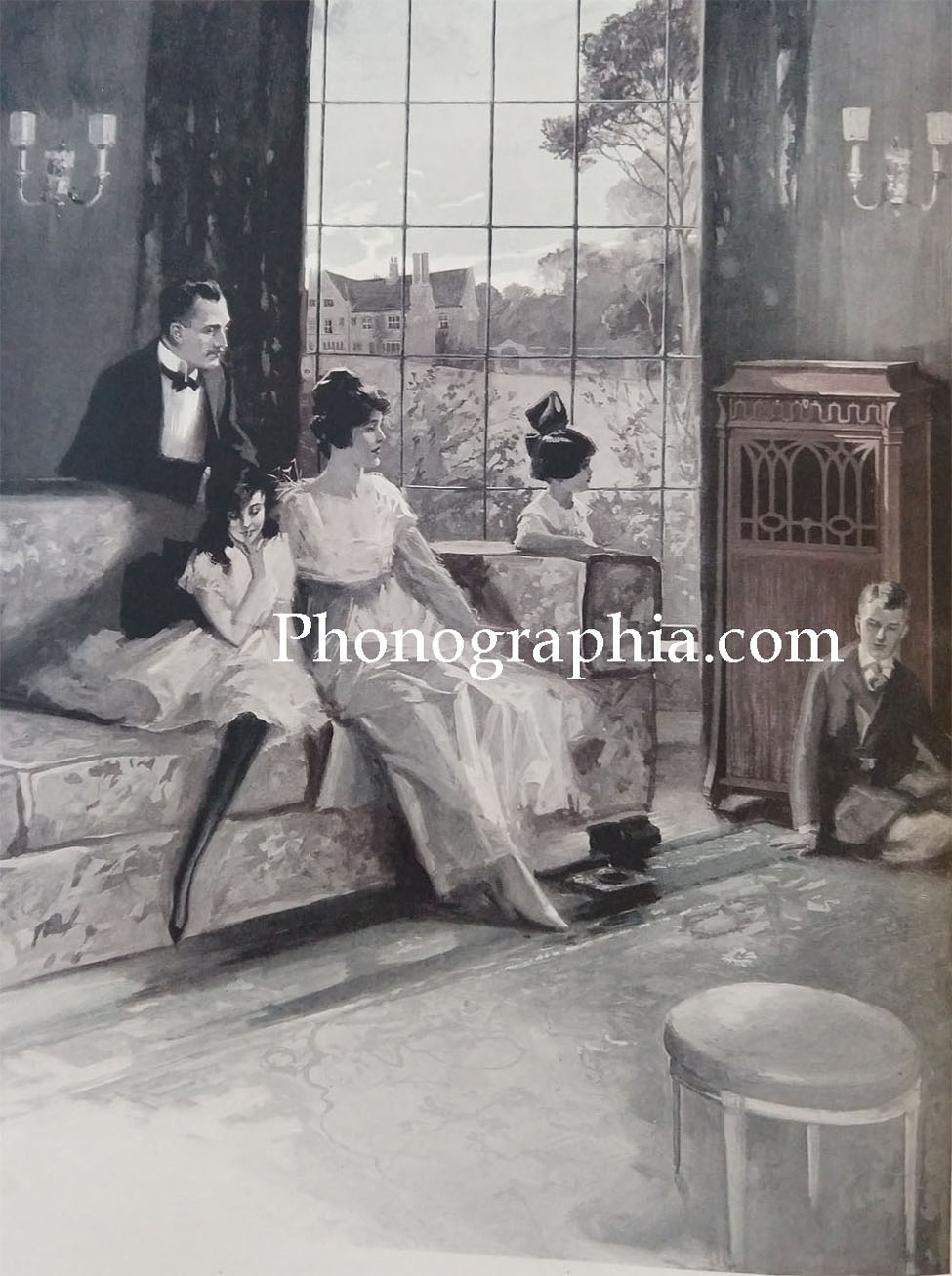
Music is essential to the
home. Thomas A. Edison Dealer Book,
1917
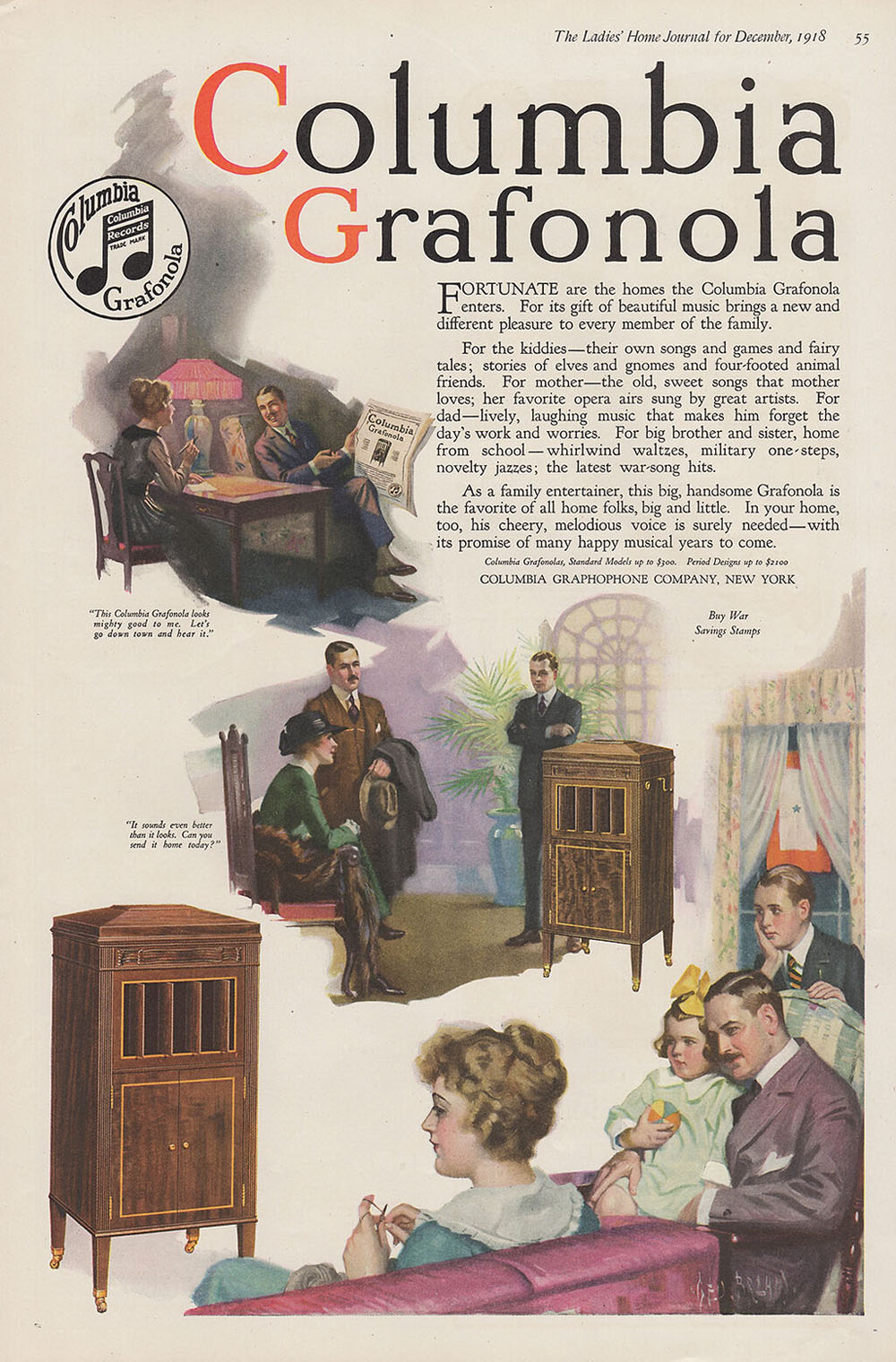
The Columbia Grafonola's gift of beautiful
music "brings a new and different pleasure to every member of
the family" The Ladies' Home Journal, December 1918
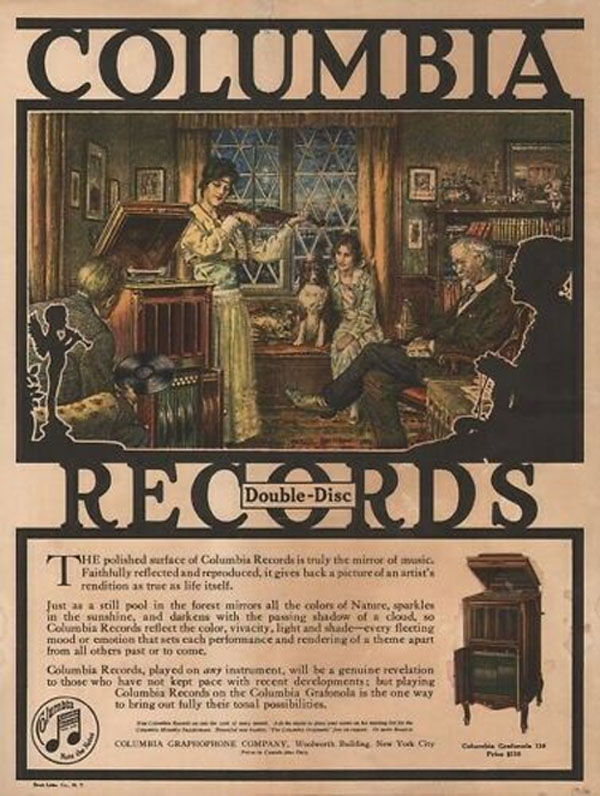
"The mirror of music"
for the whole family, 1916
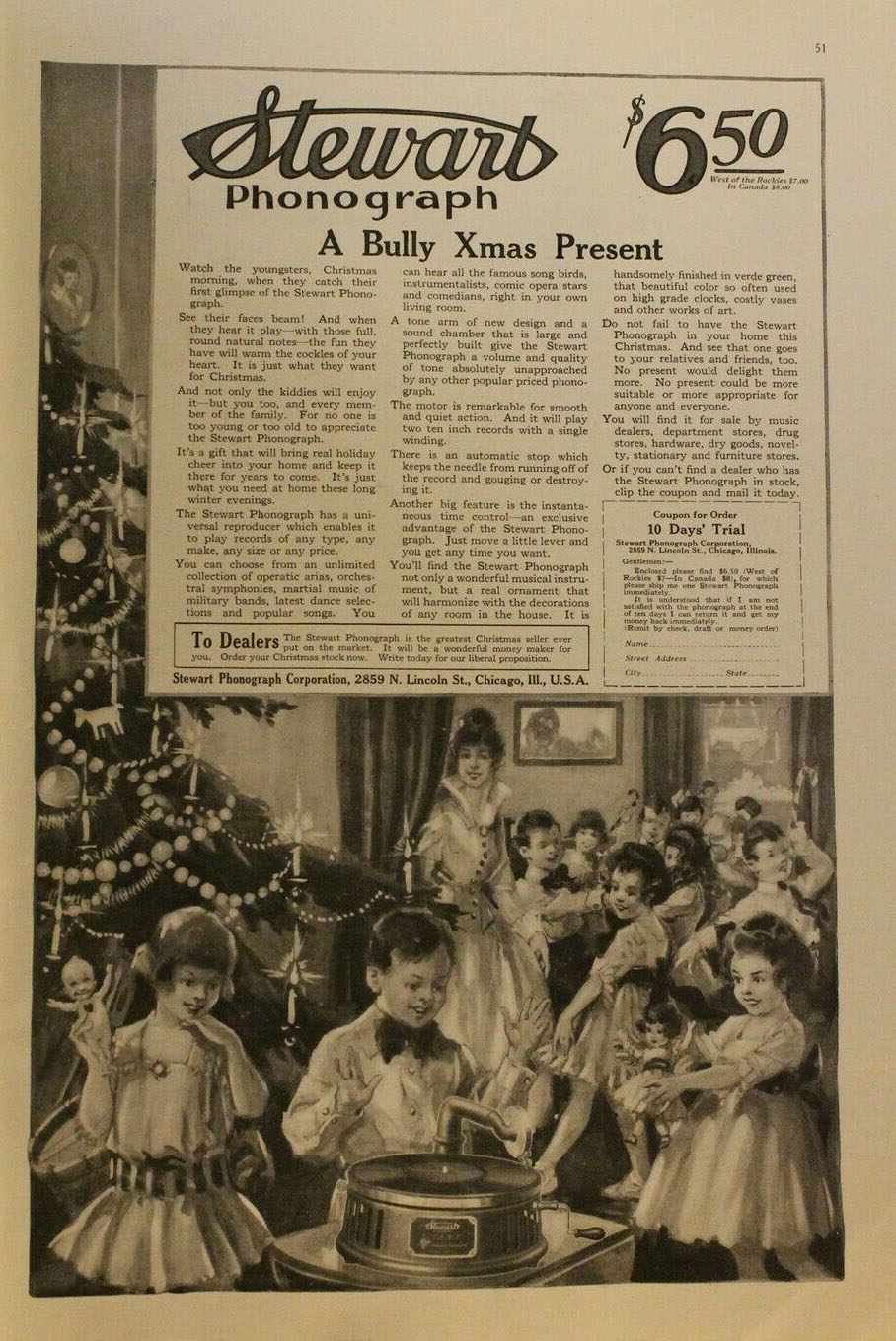
Every member of the family will enjoy
it. "For no one is too young or too old to appreciate the Stewart
Phonograph." 1916
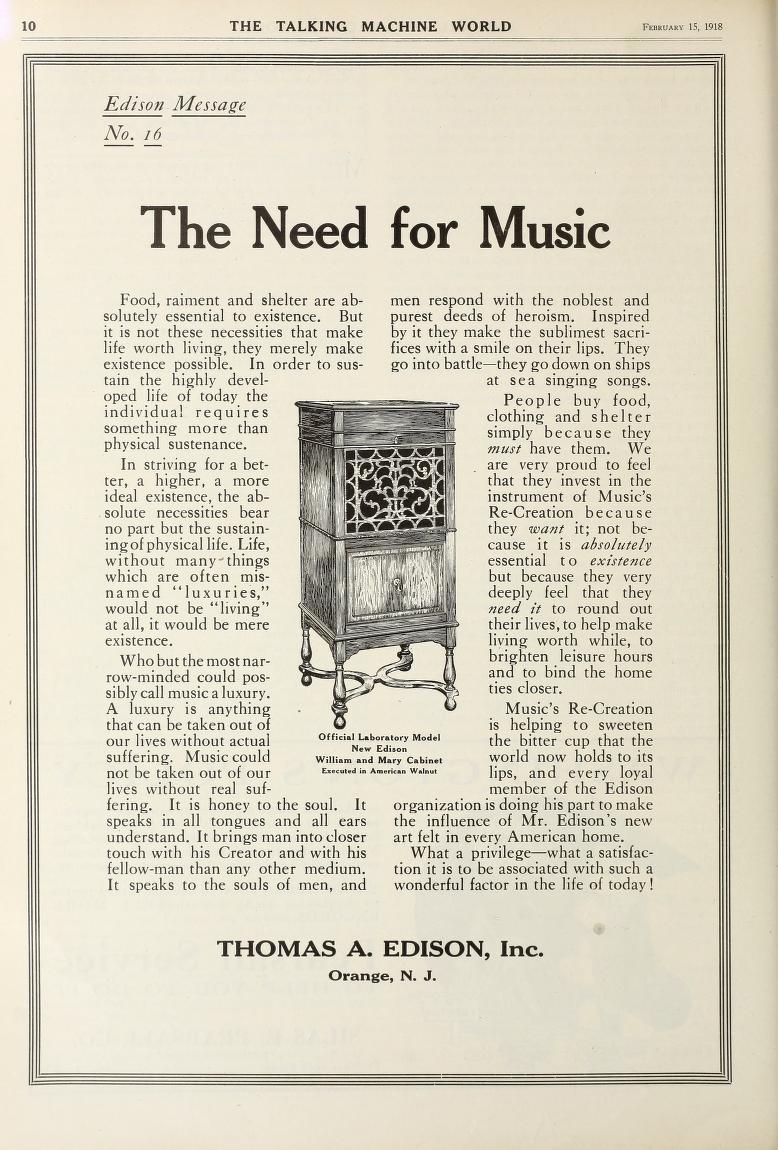
The Need for Music, The
Talking Machine World, February 1918
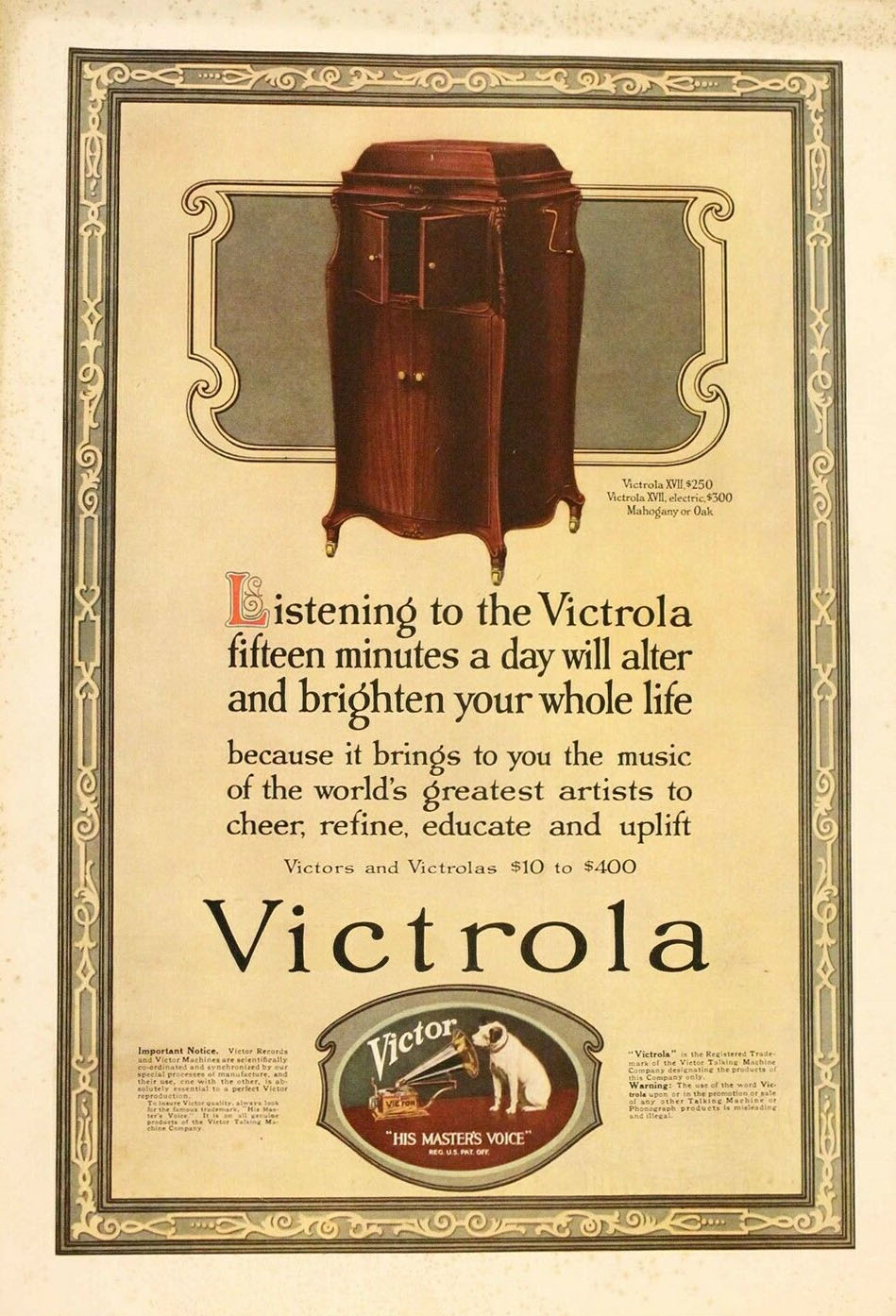
Alter and brighten your whole life because
it brings to you the music of the world's greatest artists to cheer,
refine, educate and uplift, circa 1916 Victrola
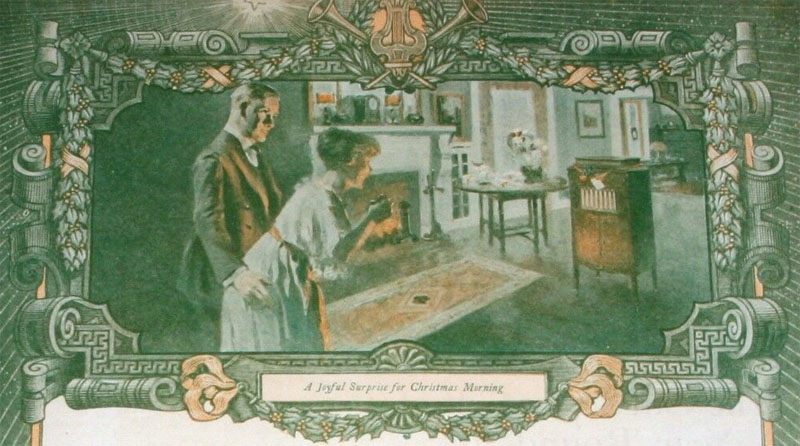
"A Joyful Surprise for Christmas
Morning, " The Aeolian-Vocalian, The Saturday Evening Post,
1919. "The Gift of a Phonograph
is Always Welcome, Doubly So If It Is the World's Greatest Phonograph
- The Aeolian-Vocalian." (PM-2119)
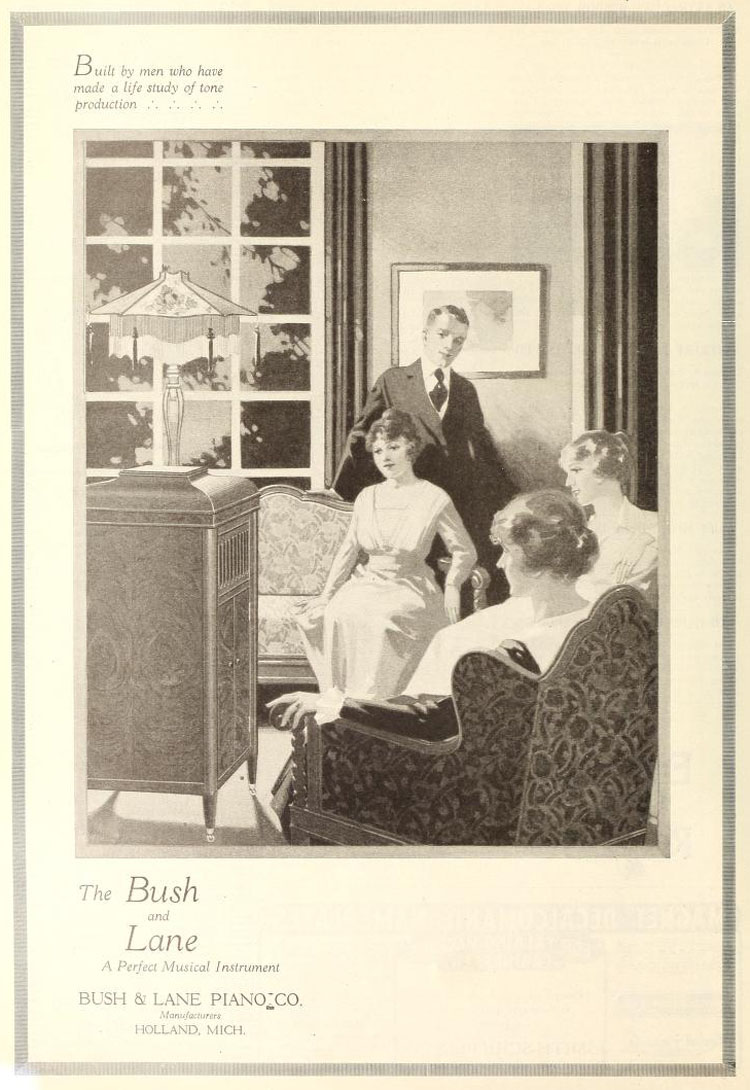
"A Perfect Musical Instrument"
The Talking Machine World, 1919
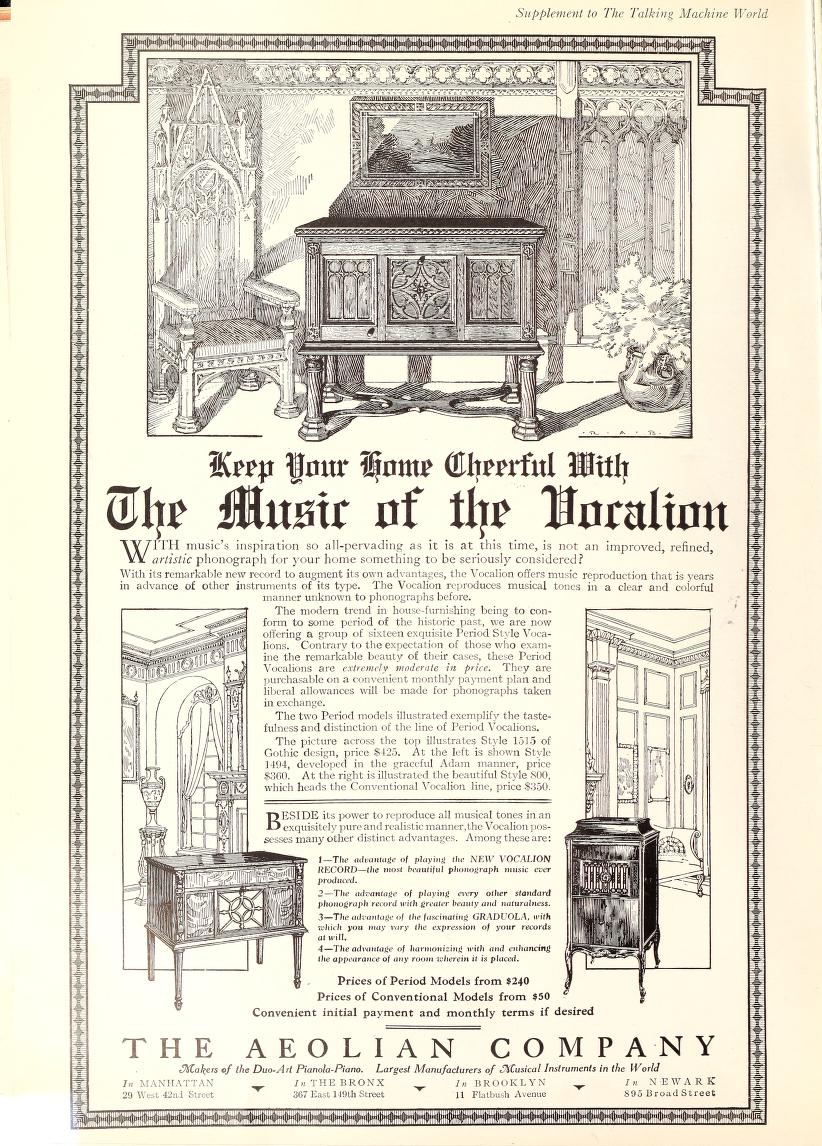
Keep Your Home Cheerful,
The Talking Machine World Supplement, February 1919

Columbia music is joyous music
and will put real, heart-filling joy into your Christmas. The
Ladies' Home Journal, December 1919
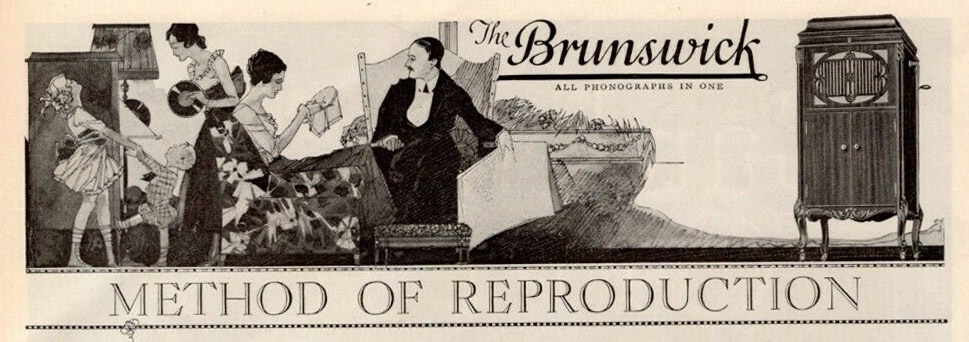
"Gives New Beauty to Record Music"Brunswick-Balke-Collender
Company, The Ladies' Home Journal, December 1919
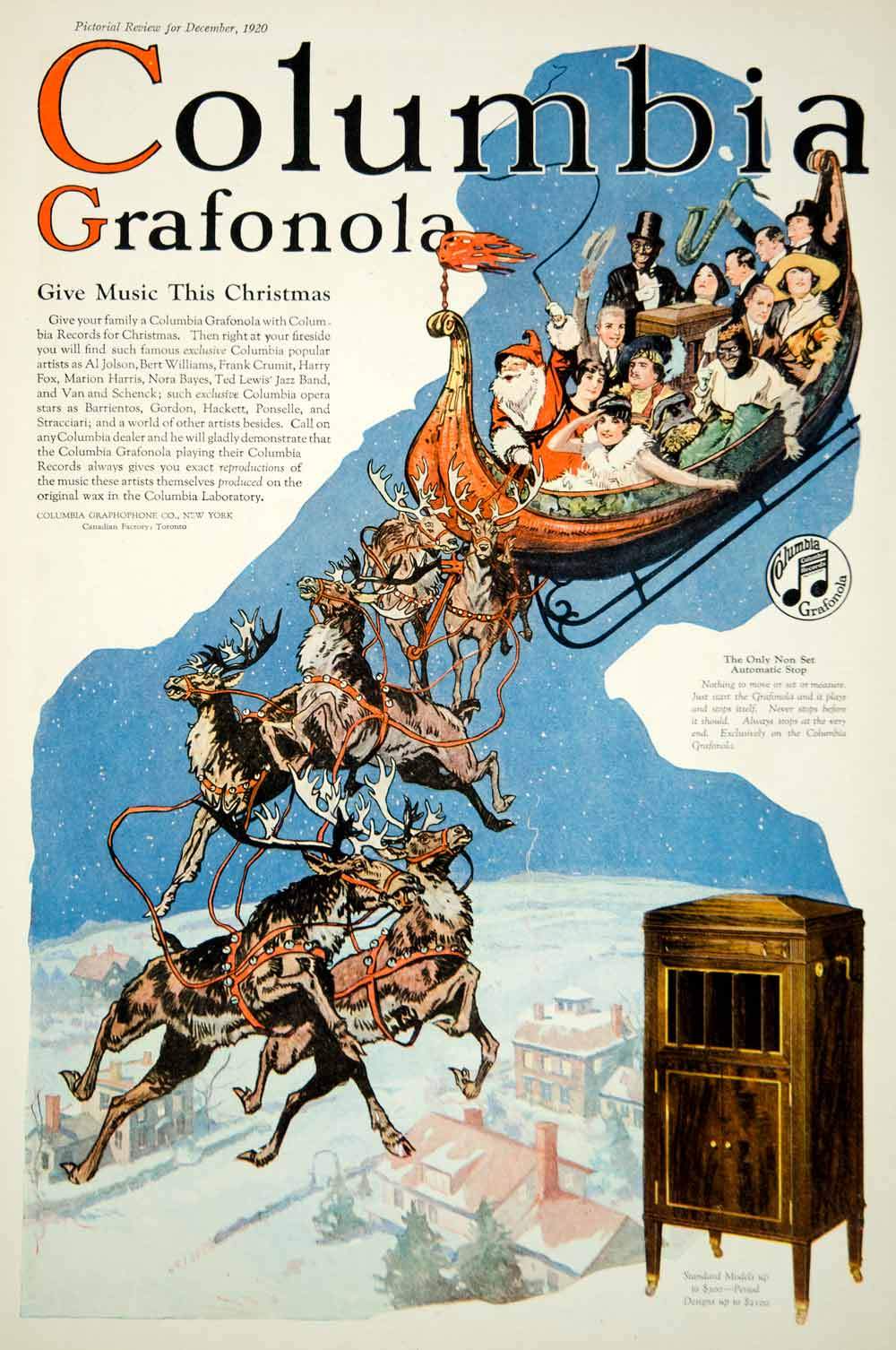
"Give your family a Columbia Grafonola
with Columbia Records for Christmas." Music right at your fireside.
Pictorial Review, December 1920
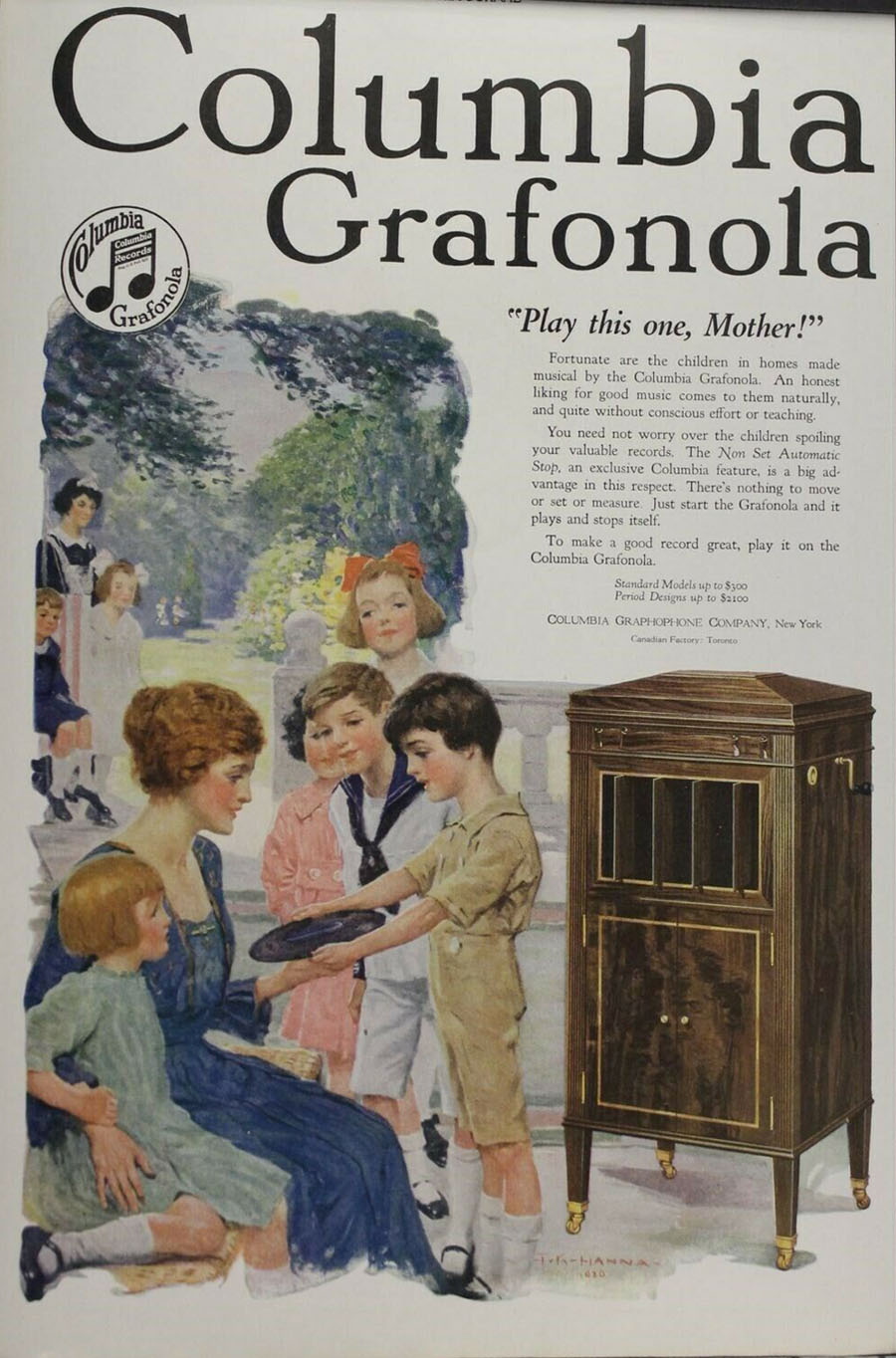
"Fortunate are the children
in homes made musical by the Columbia Grafonola." Columbia 1920
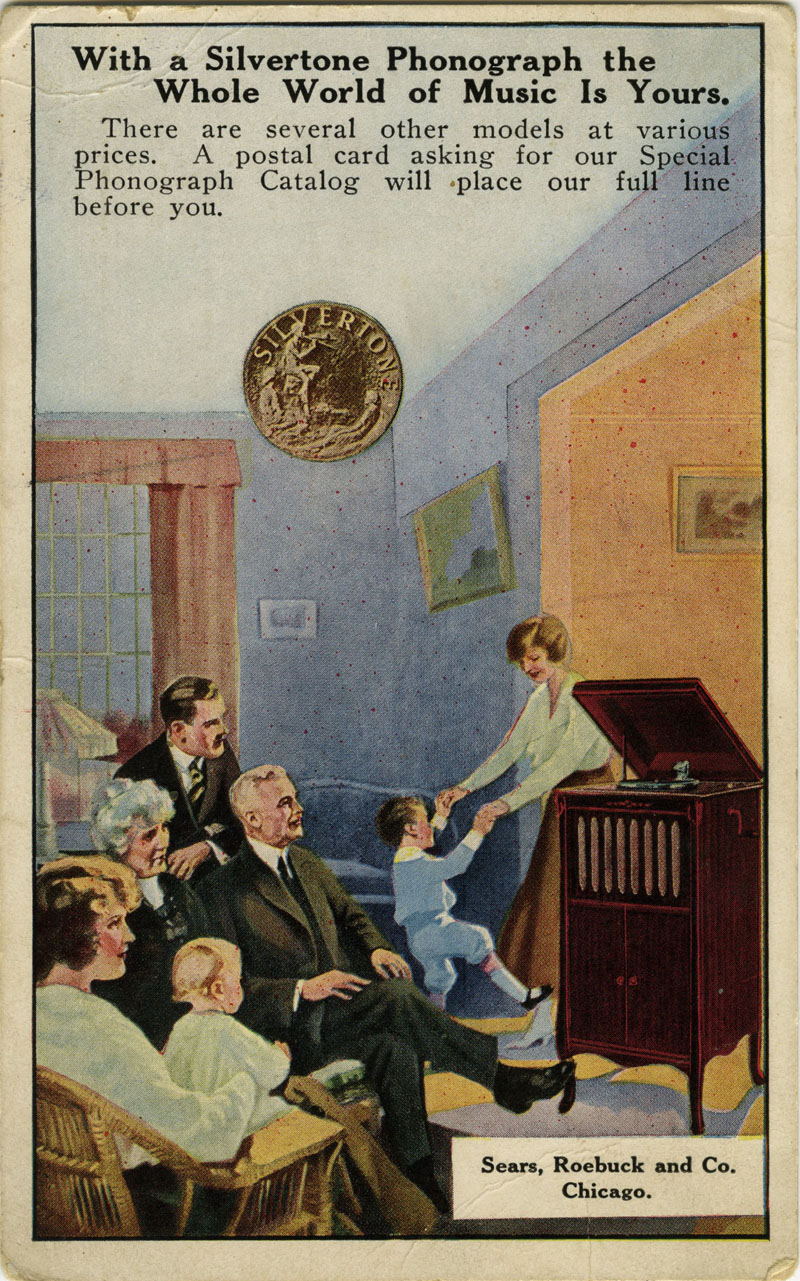
Sears Silvertone Phonograph
advertising postcard, circa 1920
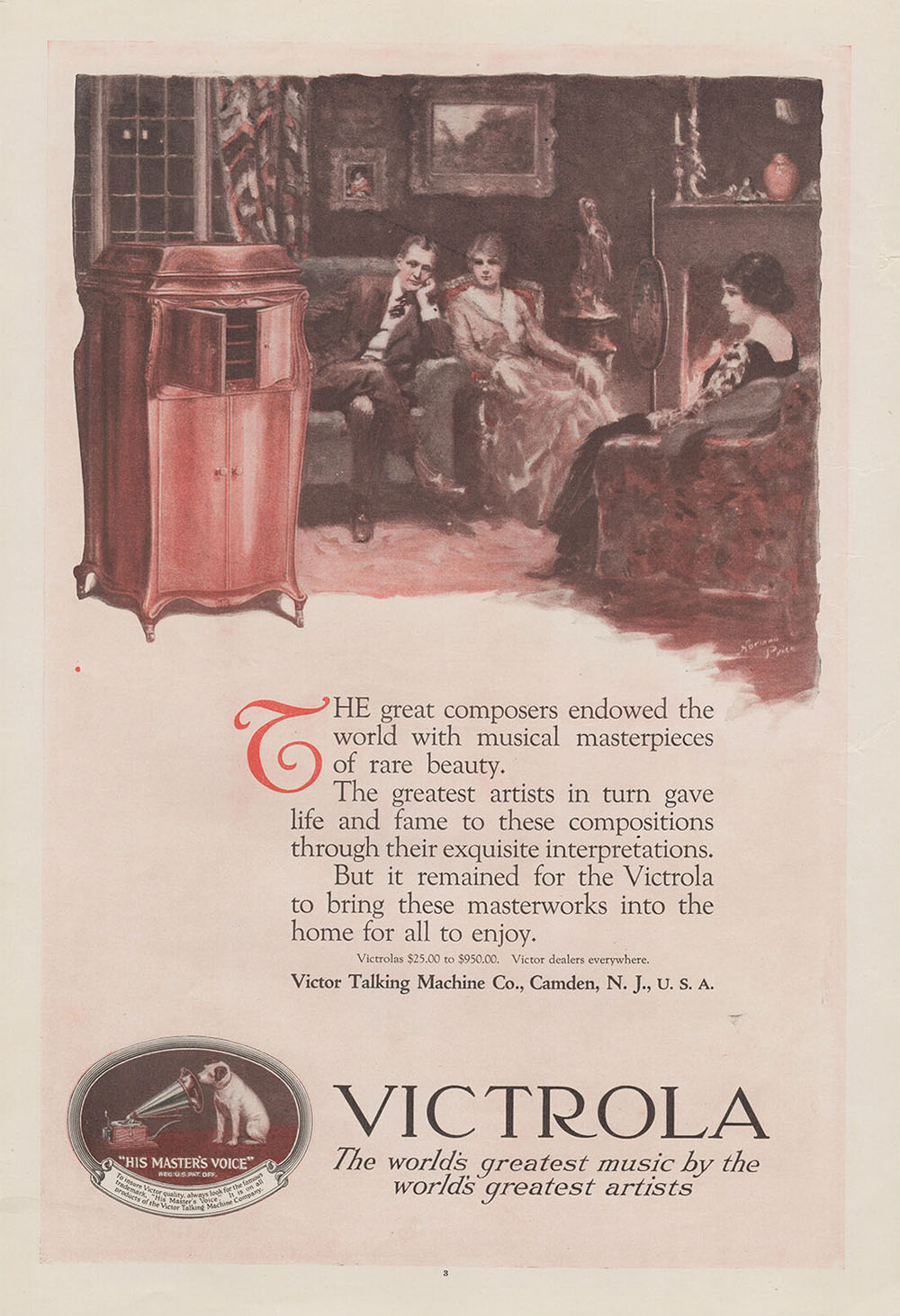
Victrola Ad, 1920
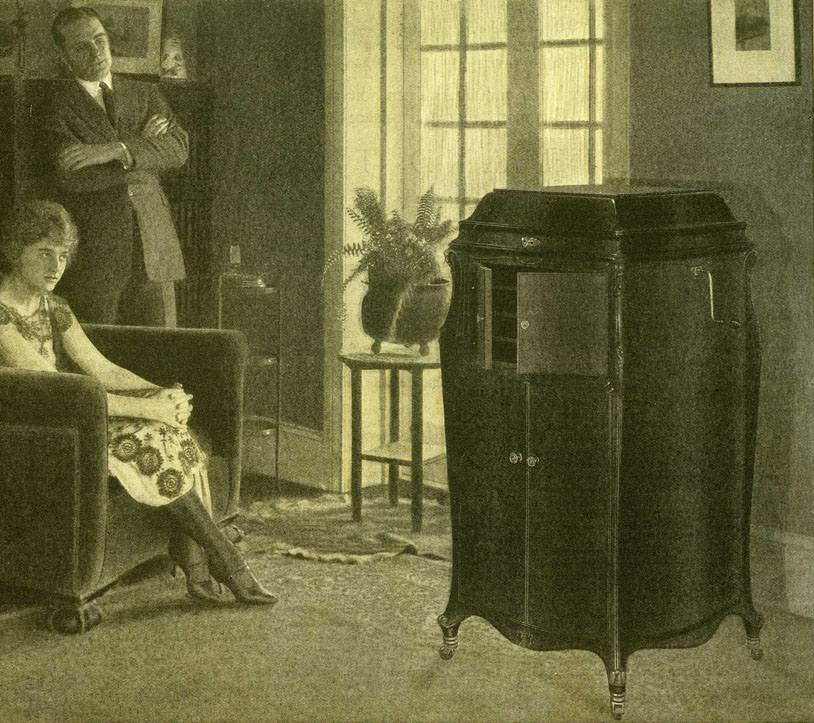
"There's lasting satisfaction
in owning a Victrola." The Delineator, 1921 (PM-2028)
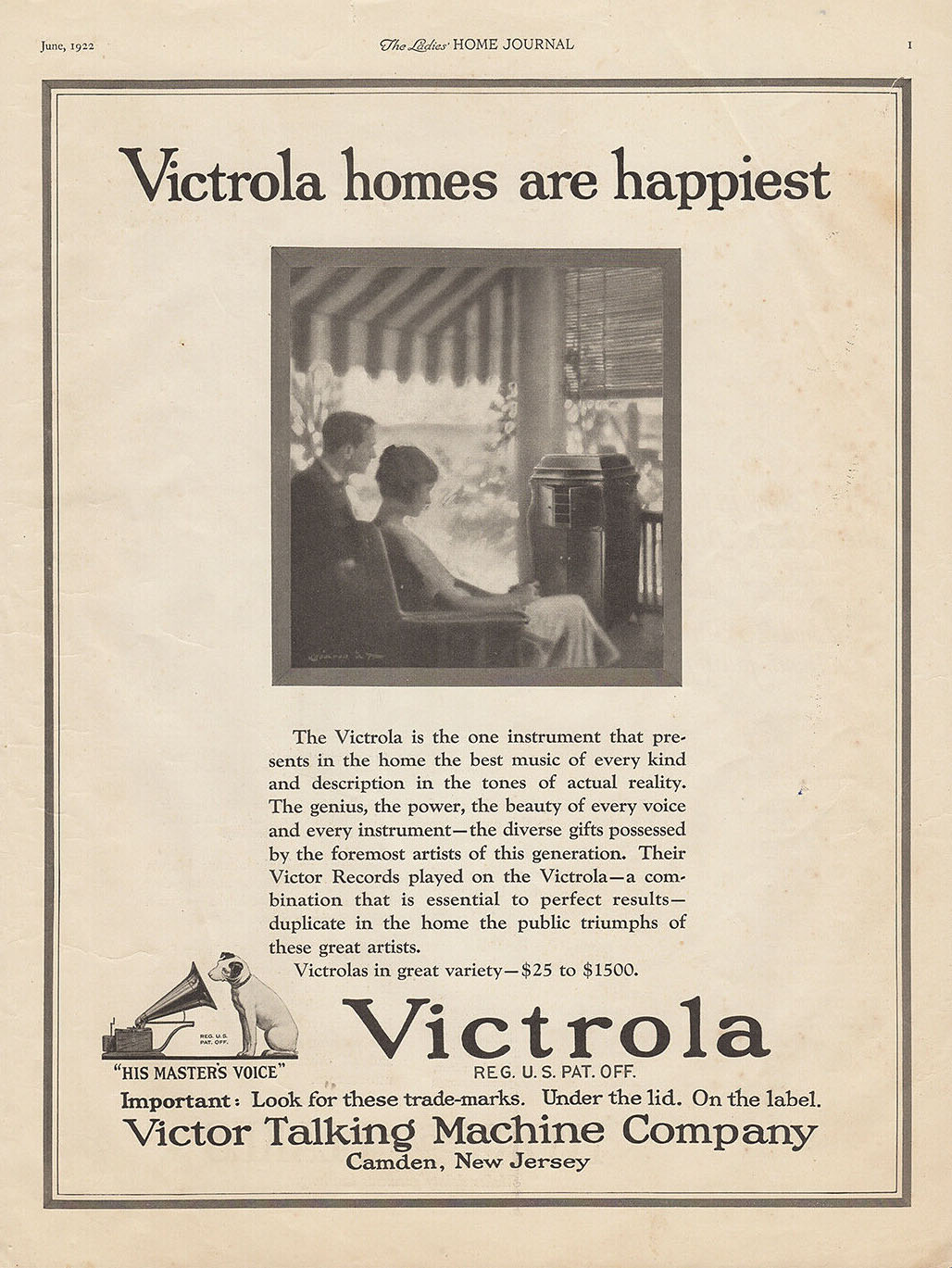
"Victrola homes are
happiest" 1922
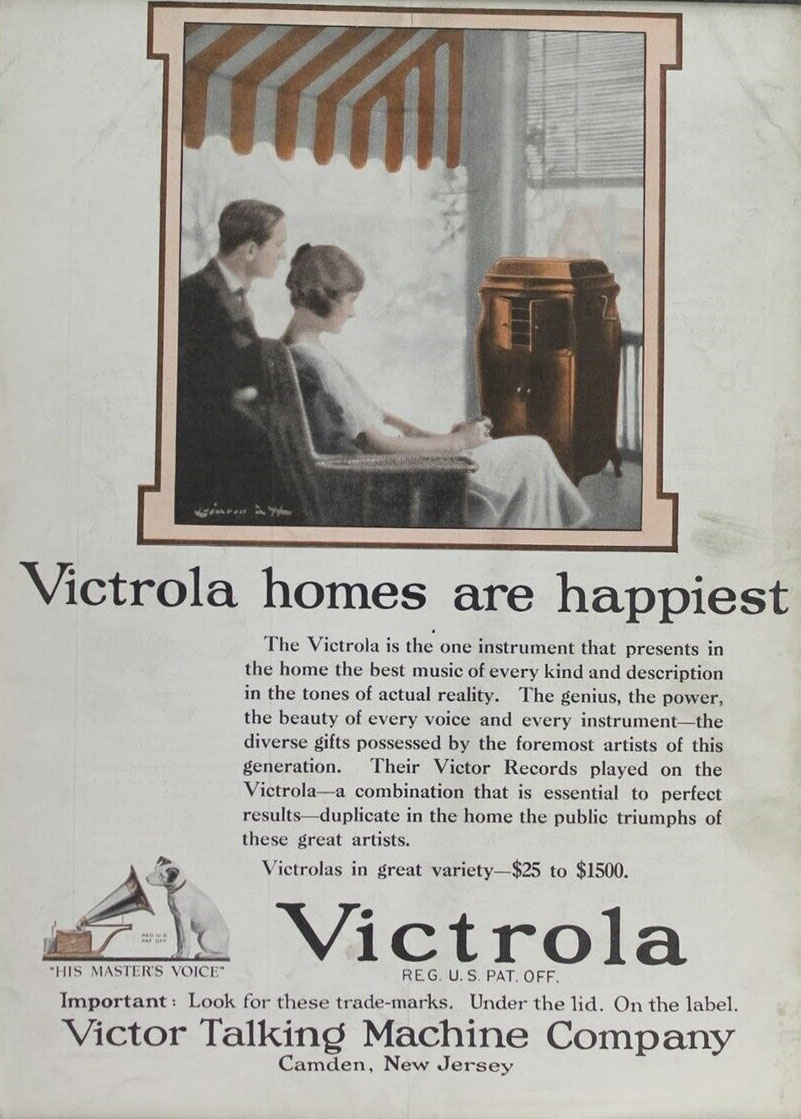
"Victrola homes are
happiest," 1922
"Music Unites the Family,"
Glass Advertising Magic Lantern Slide, Pathé circa 1922.
"Beautiful songs knit
hearts together and make the home happier." (FP0609)
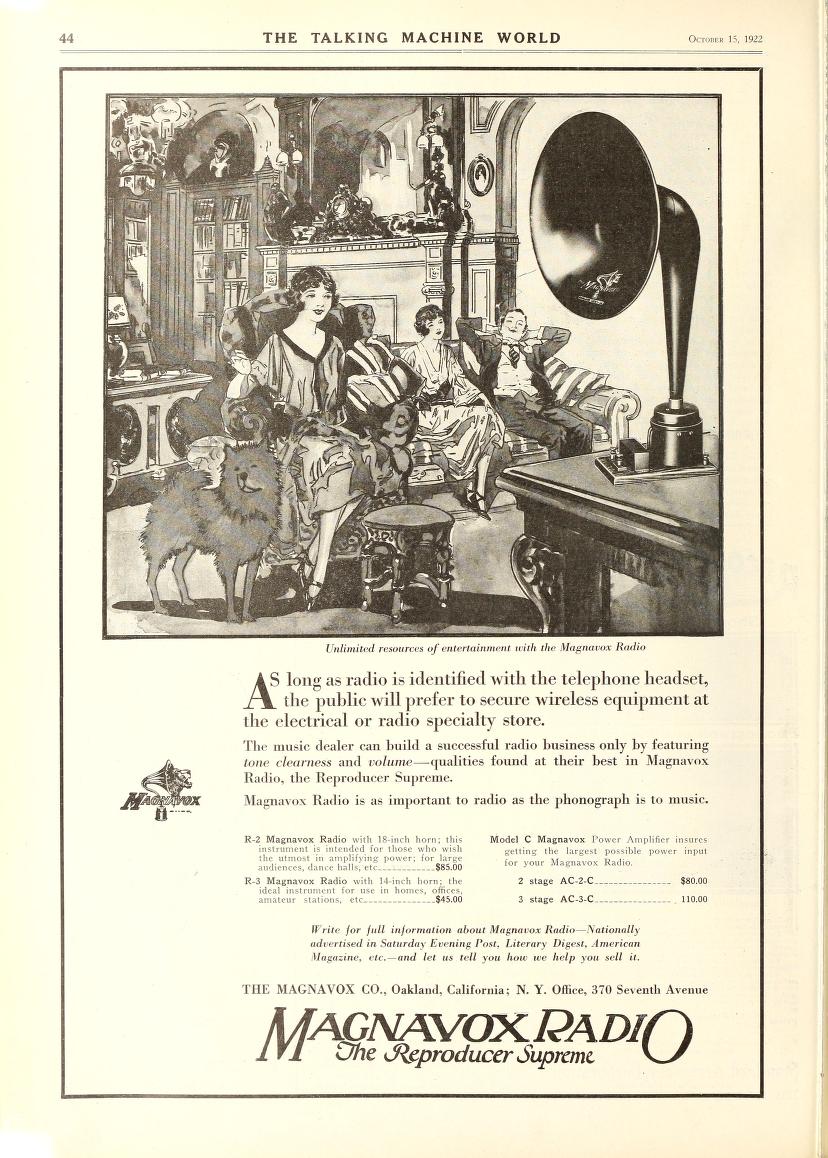
Magnavox Radio is as important to radio
as the phonograph is to music." The
Talking Machine World, October 1922.
1899
- What will you do during the Long Winter Evenings? - A Phonograph,
of course.
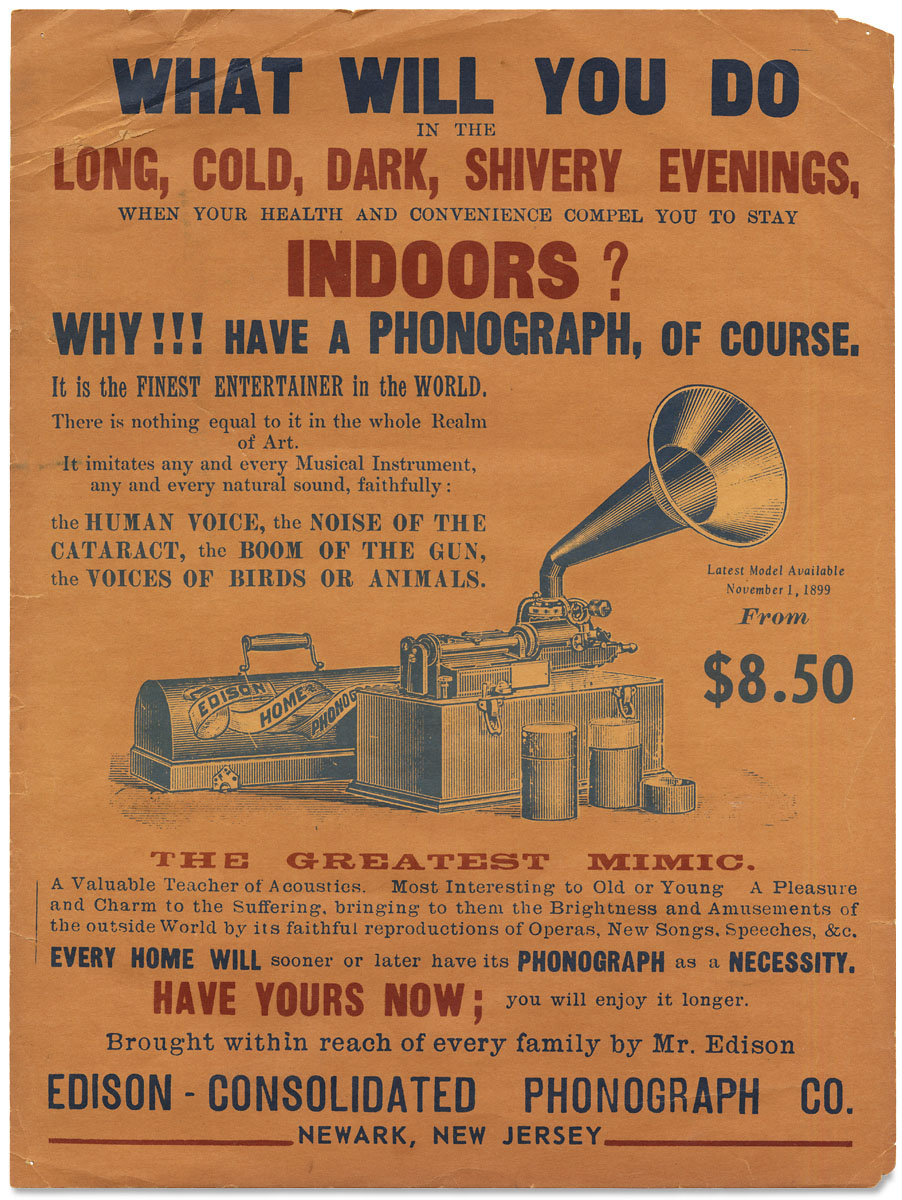
ca. 1899 - What
will you do in the long, cold dark, shivery evenings? - The
Phonograph
1922
- What will you do during the Long Winter Evenings? - A
Radio solves this problem.
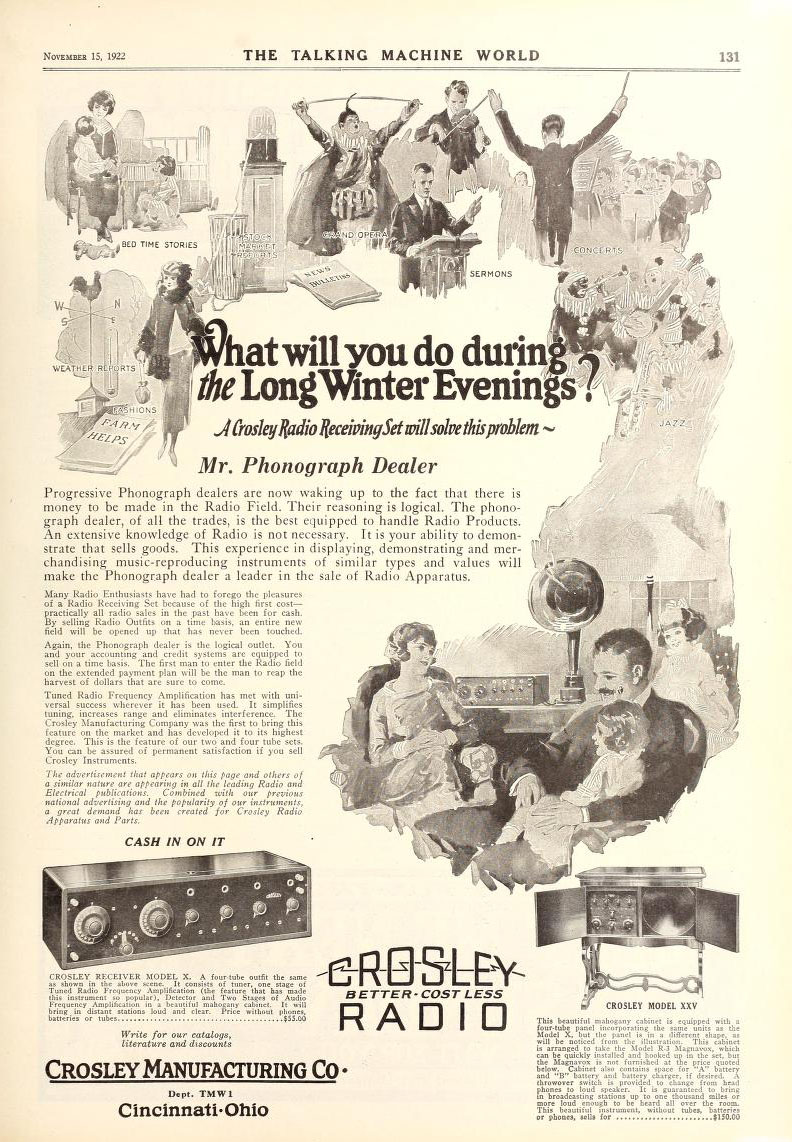
Crosley
Radio, The Talking Machine World, November 1922
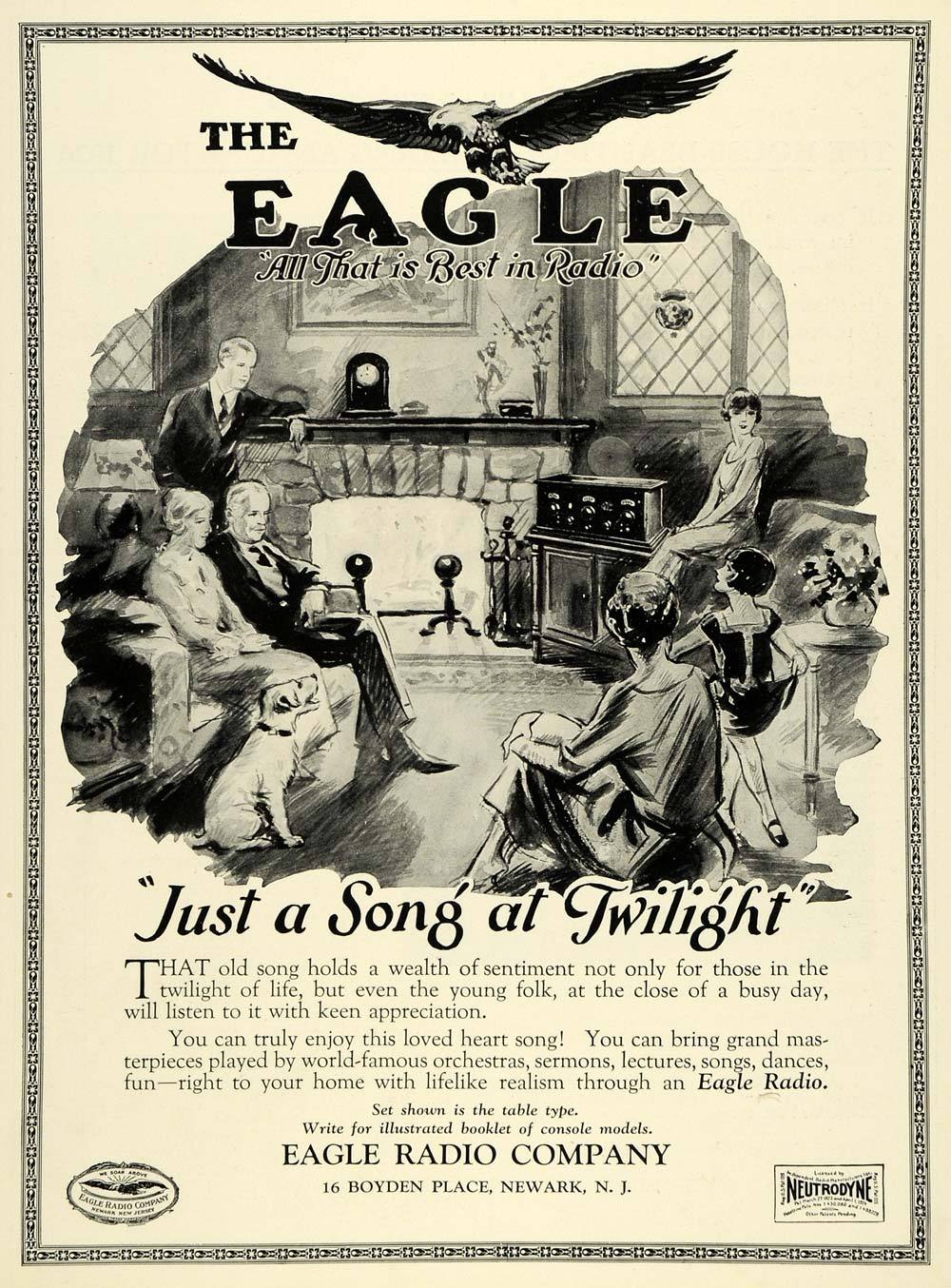
"Just a Song at Twilight"
- Eagle Radio, 1925

"'Super-Het' brings
home the fun!" - Radiola, Scientific American, January 1925
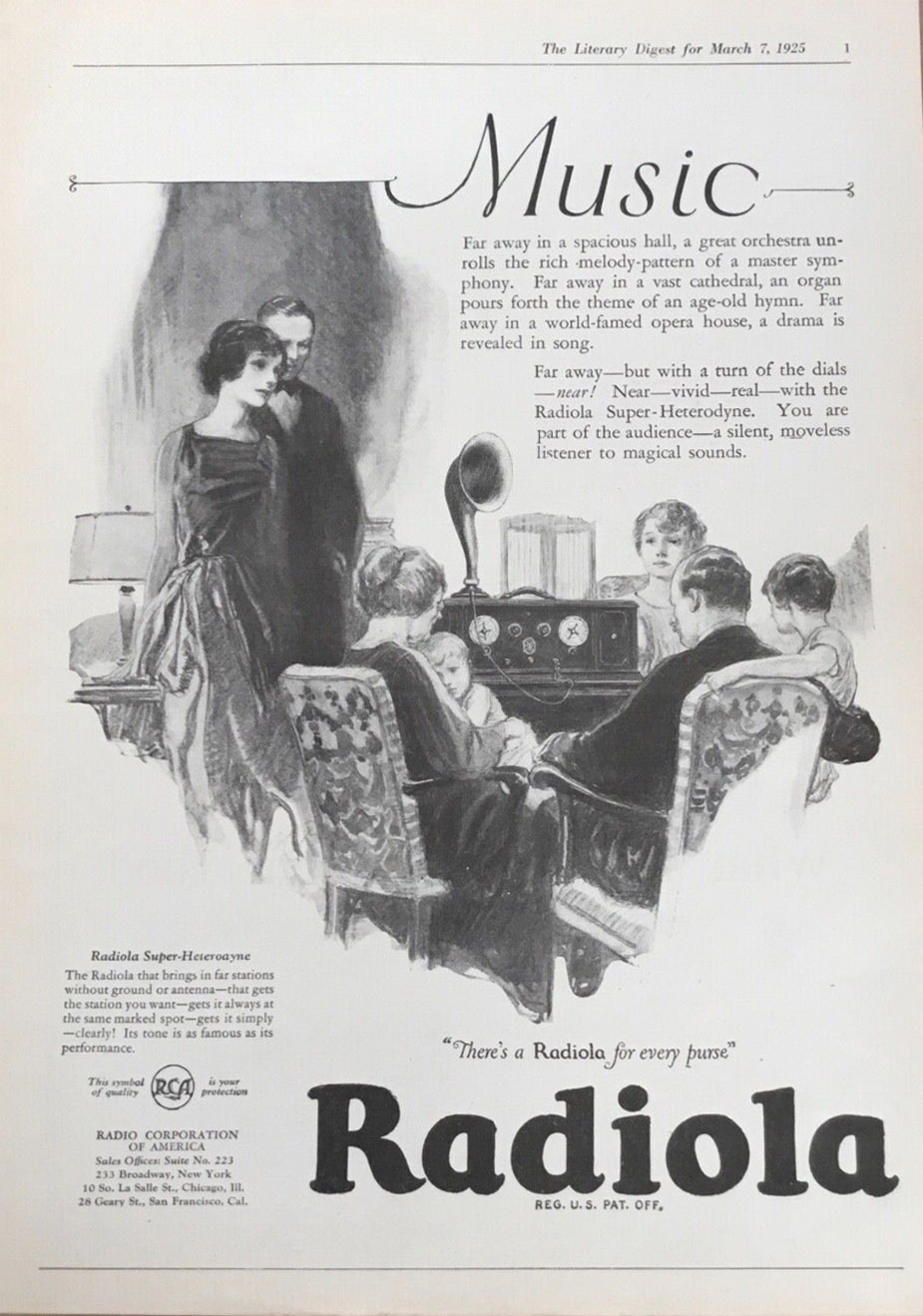
Music from far away - but with a turn
of the dial "You are part of the audience" - Radiola, The
Literary Digest for March 7, 1925.
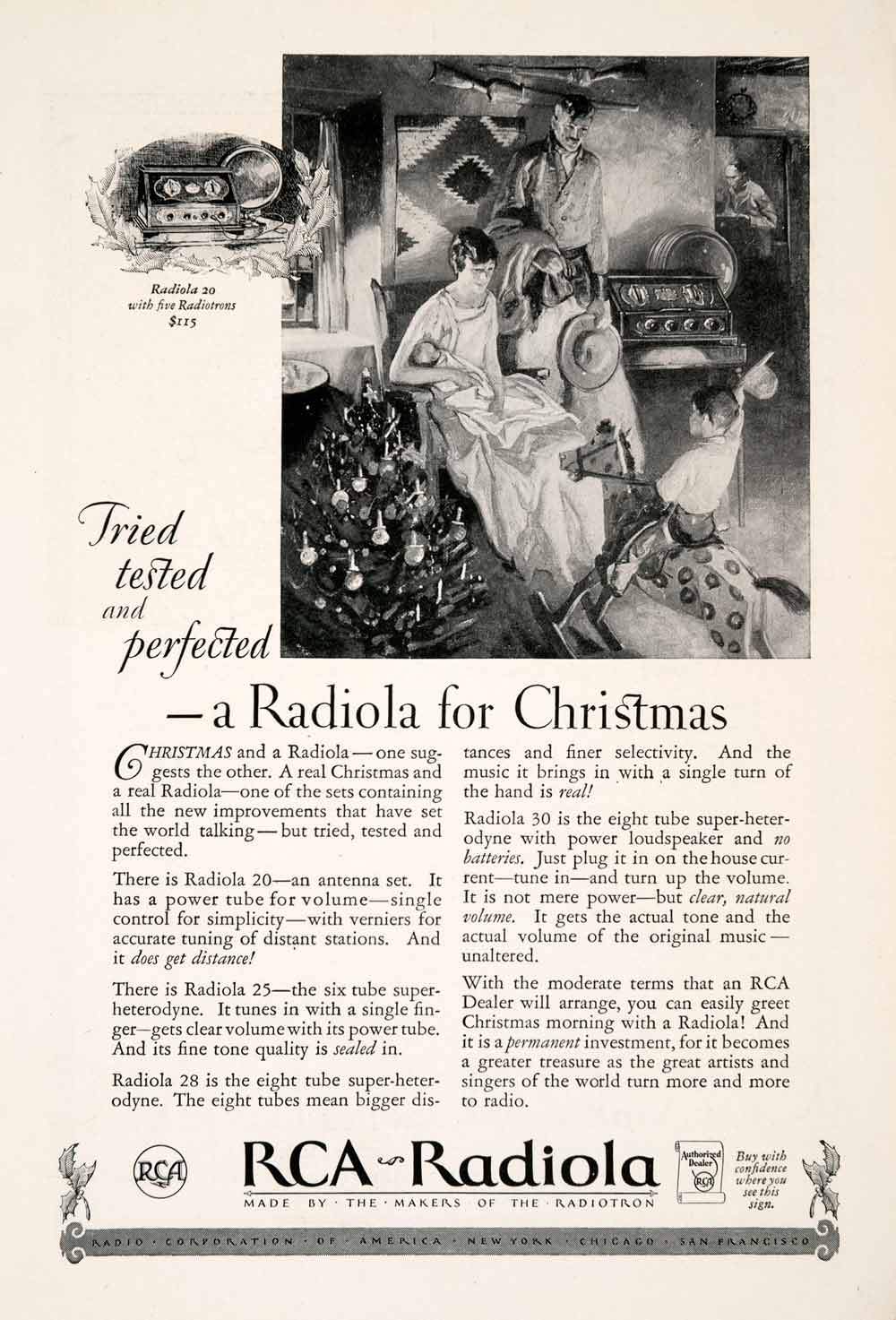
Radiola for Christmas,
1926
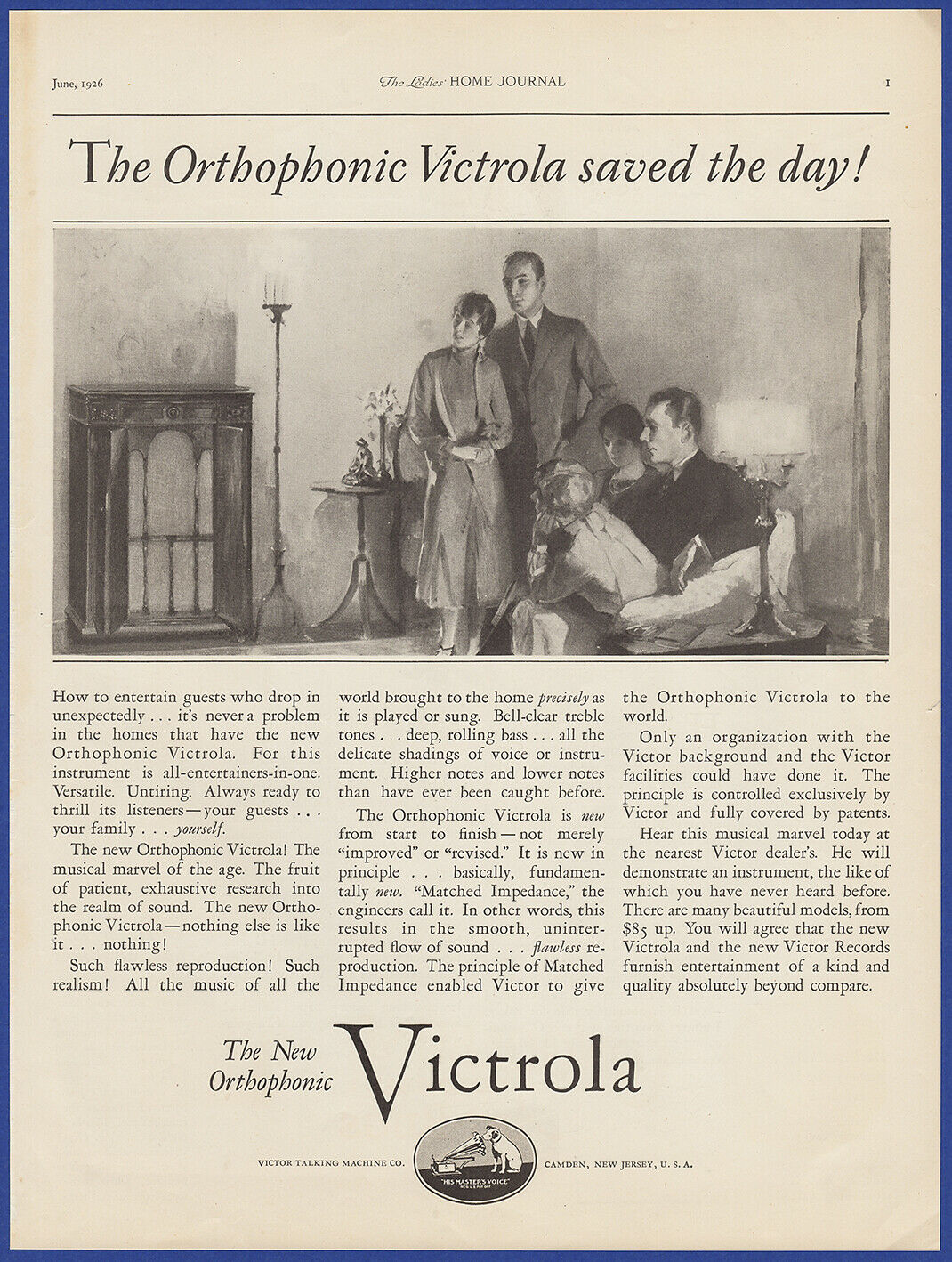
The Orthophonic Victrola
saved the day! The Ladies' Home Journal, 1926
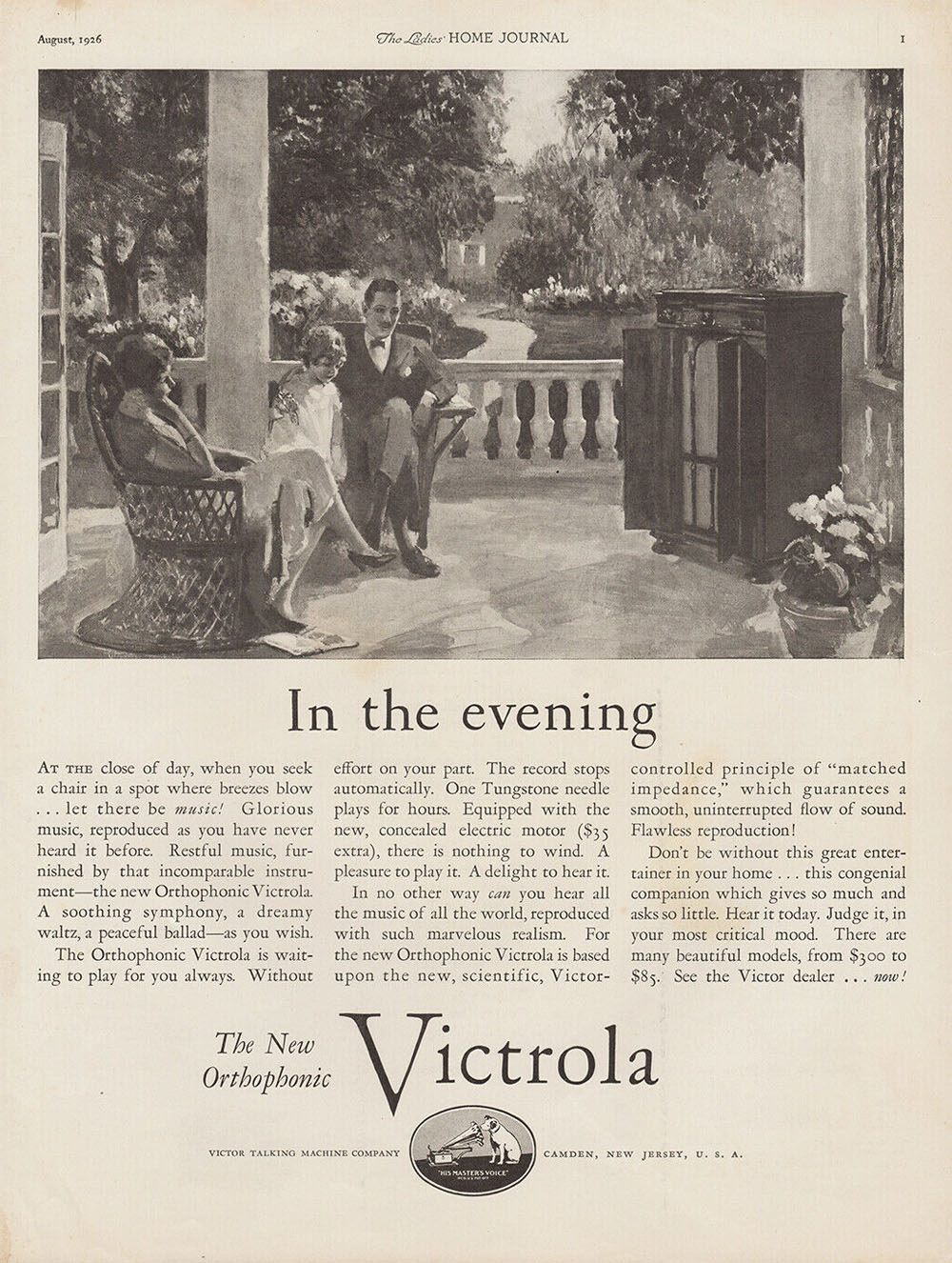
"In the Evening...this congenial
companion which gives so much and asks so little" The Ladies'
Home Journal, 1926
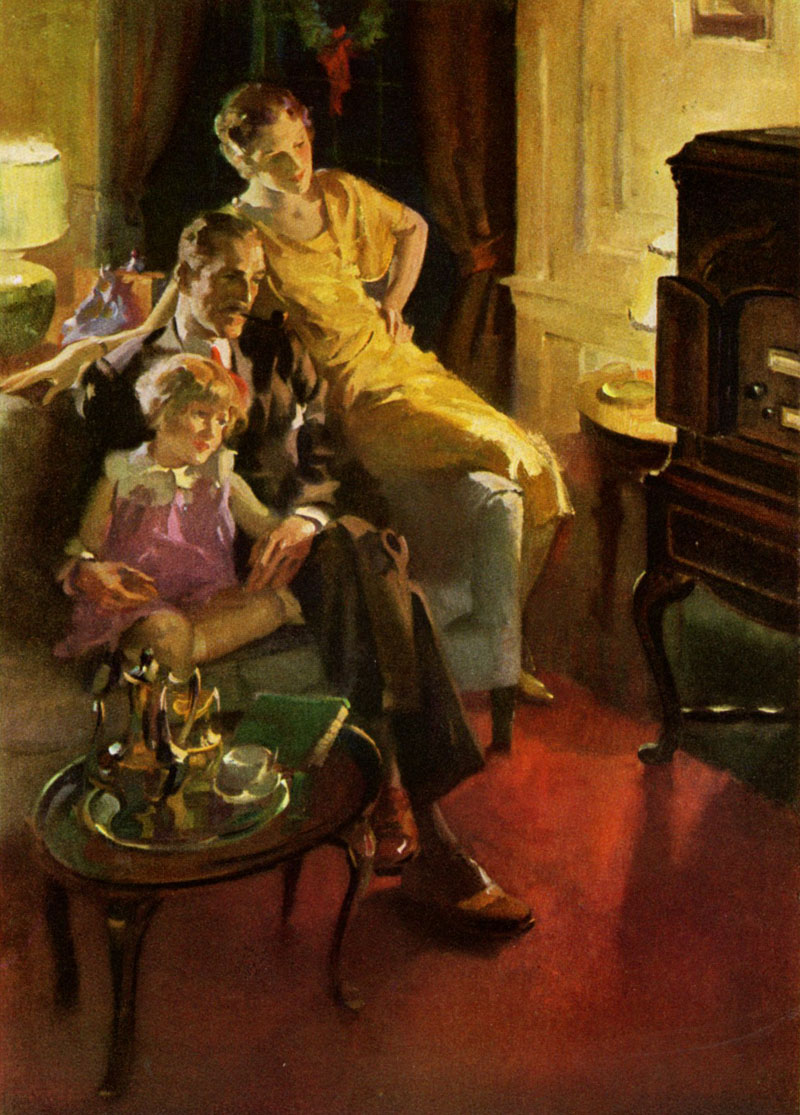
General Motors Queen Anne Radio-Phonograph
with Visual Tone Selector, December 1930. "What
other gift could possibly bring so much of lasting pleasure!"
(FOTP)
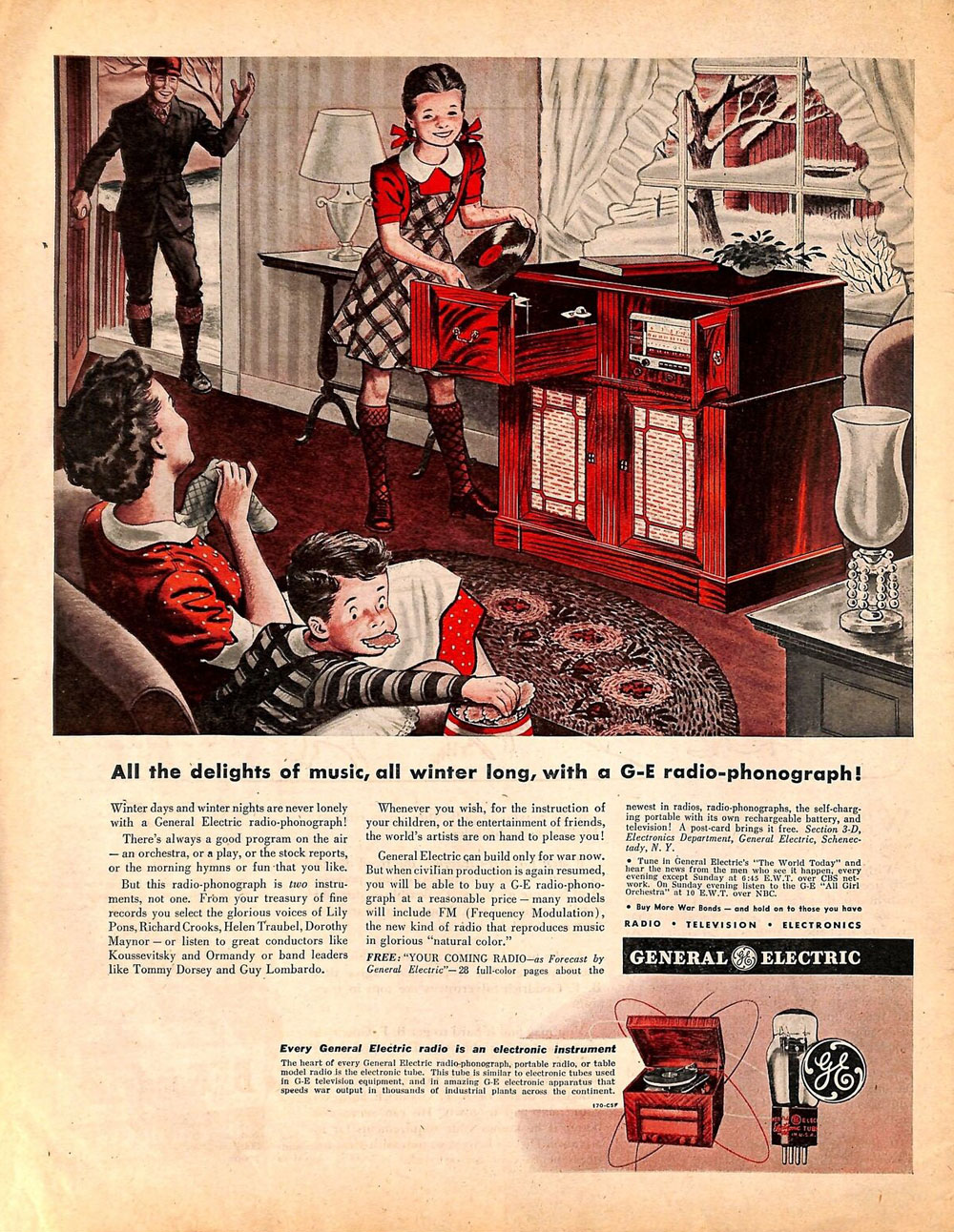
"Whenever you wish, for the instruction
of your children, or the entertainment of friends, the world's artists
are on hand to please you!" General
Electric Radio-Phonograph, 1944 (FOTP).
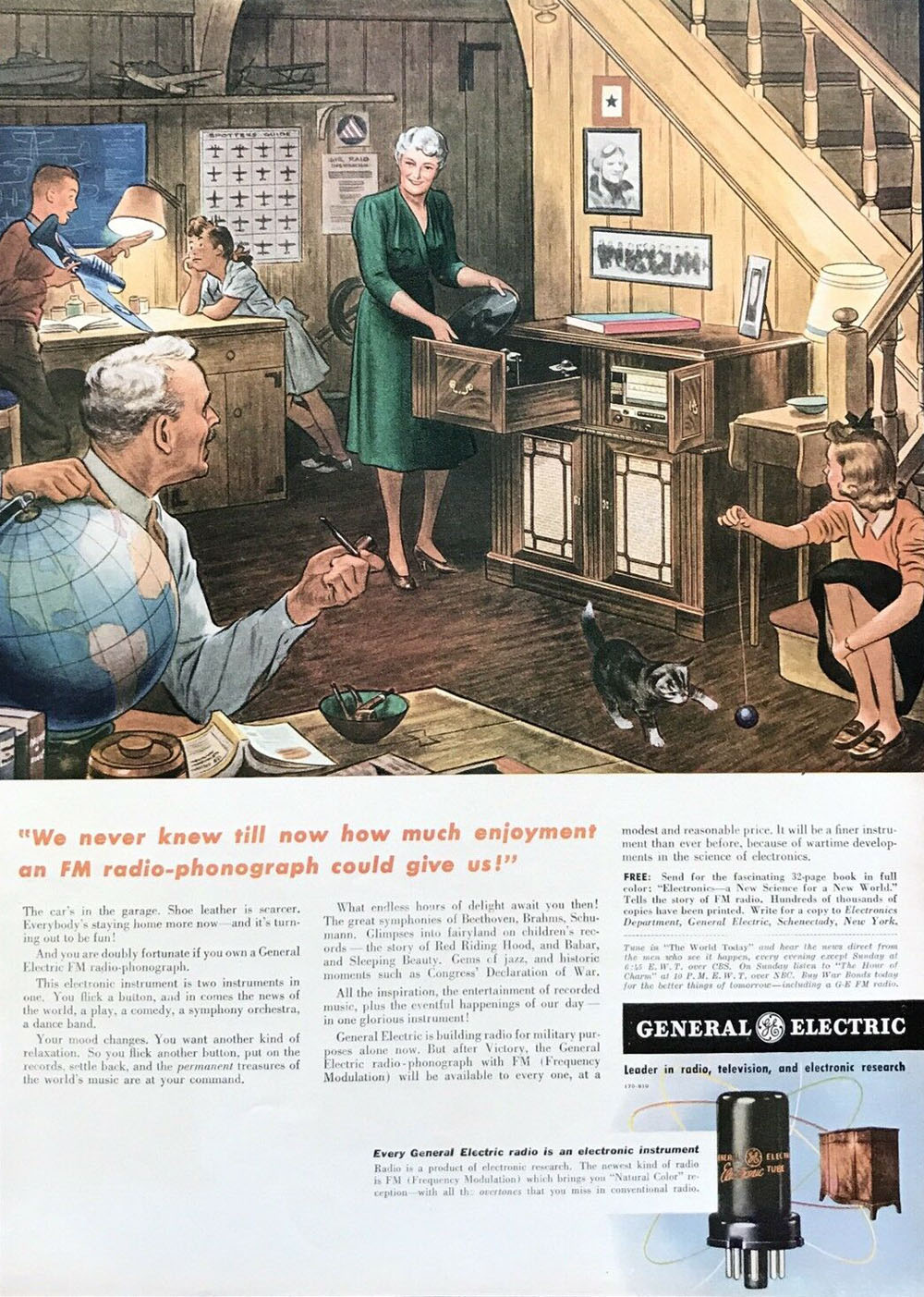
"put on the
records, settle back, and the permanent treasures of the world's
music are at your command." General Electric, 1941
"Music on a Beam of Light"
for the Pleasures of Home and Family
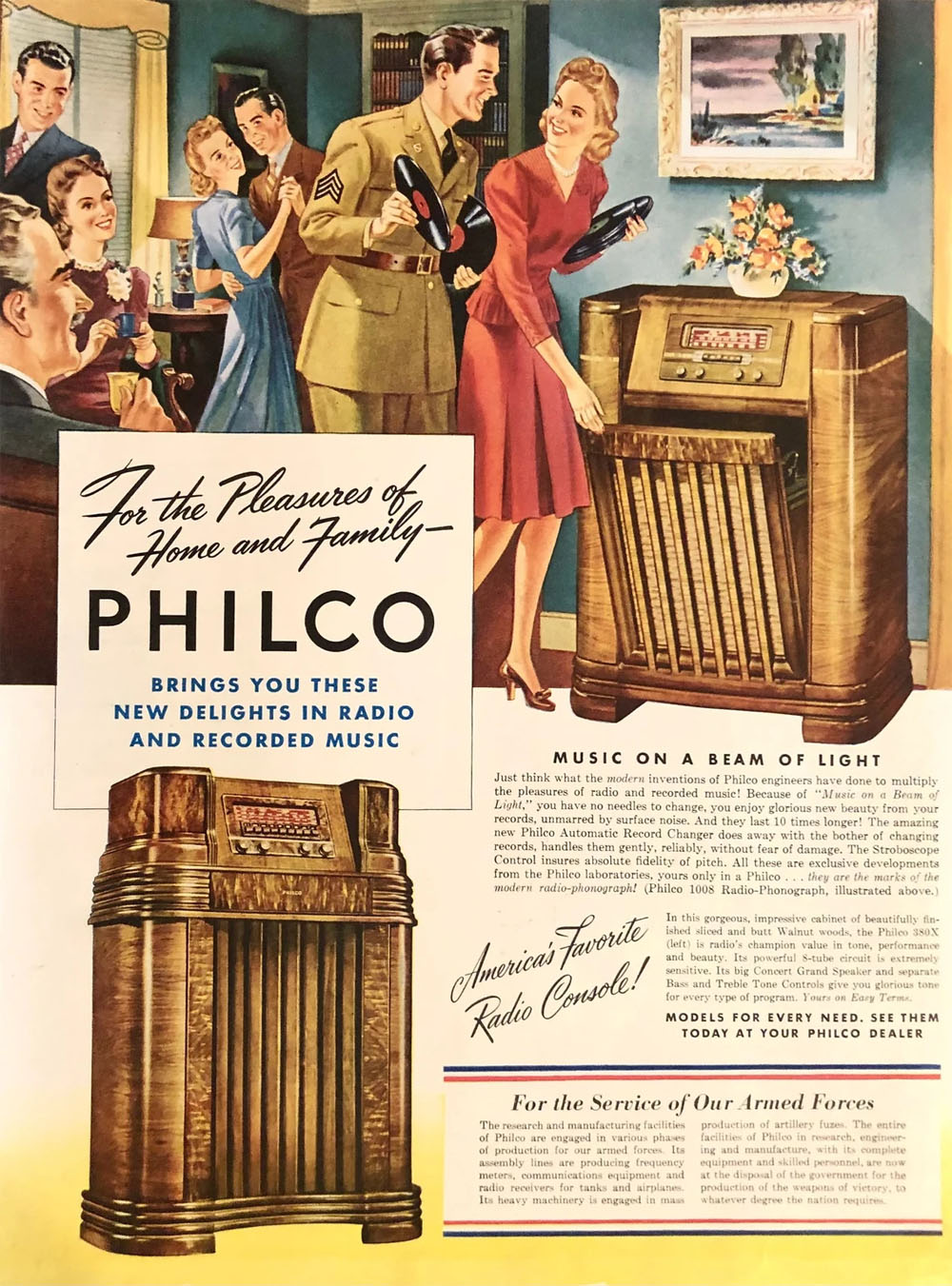
"For the Pleasures
of Home and Family", Philco Radio-Phonograph, 1942.
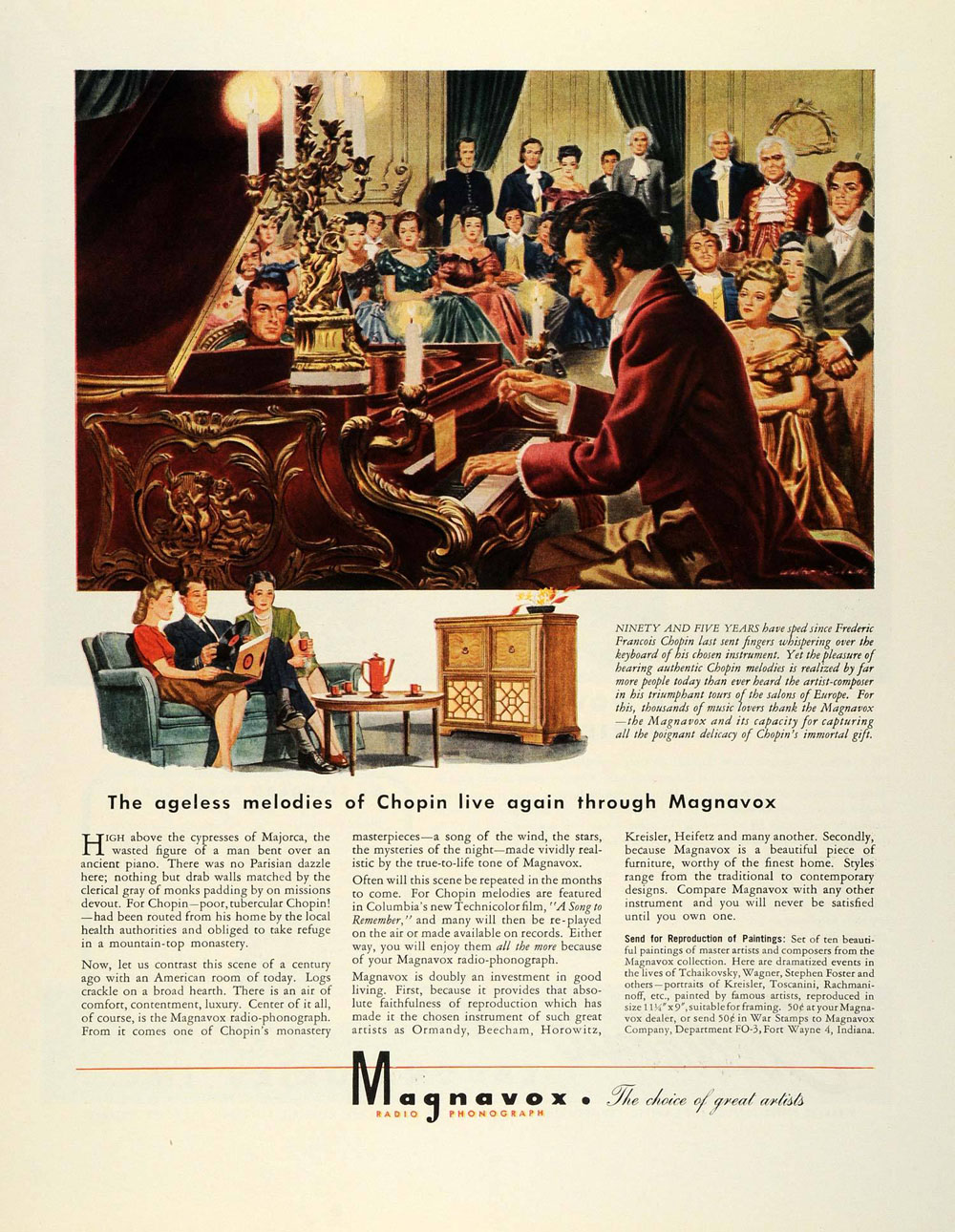
"thousands of music lovers thank
the Magnavox -- the Magnavox and its capacity for capturing all the
poignant delicacy of Chopin's immortal gift," 1945
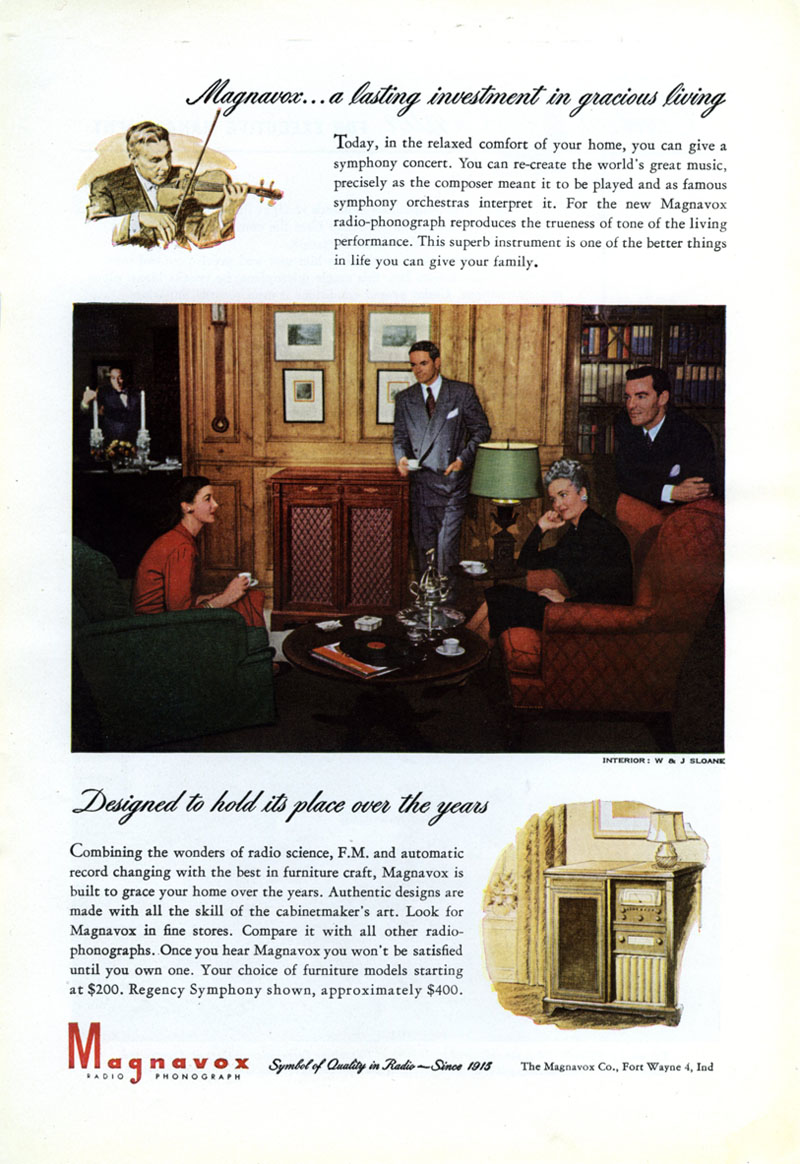
"This superb instrument
is one of the better things in life you can give your family."
Magnavox 1946
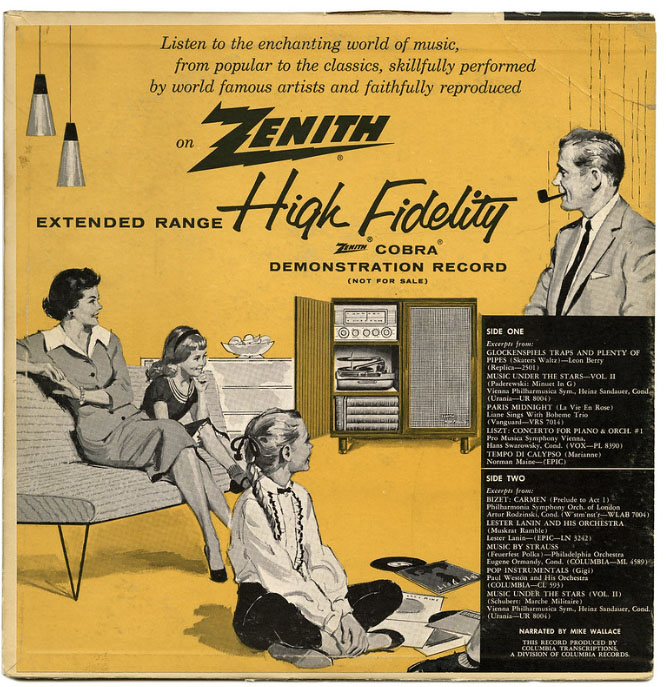
1951 Zenith High Fidelity
Demonstration Record
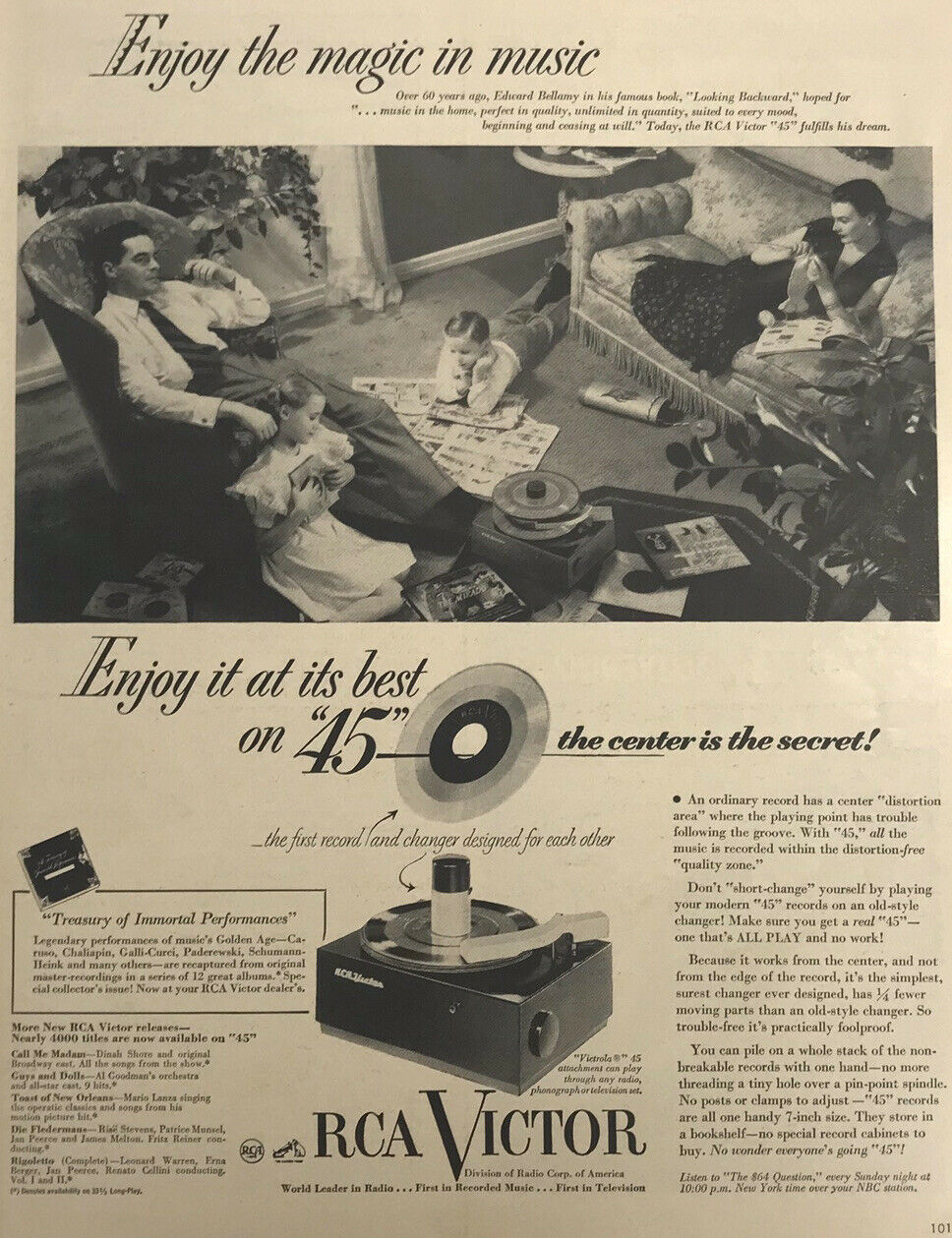
The Magic of Music in the
Home, RCA Victor, 1950
Television - Another dimension to
Home Theatre
Recorded sound brought music and a variety
of entertainment into the home.
As seen in the early phonograph advertisements
the home as the stage of the world offered "unlimited entertainment"
with performers visualized and experienced in your home the same as
if you went to the opera or the theatre or other live performance.
Radio was one step closer to the live
performance as it could bring an actual performance of the Opera through
the air in real time. But this still required visualization of those
scenes and performers.
After the phonograph was invented there
were futurists describing the 'complete" theatre for the home
in the not too distant future. Descriptions relied on combinations
of what they already understood such as the phonograph, the telephone
and in the 1890's the addition of moving pictures. A "seeing
telephone" and an 'Electric vision apparatus" or the combination
of the kinetoscope, phonograph and telephone were thought to be ways
that future home theatre might be delivered to the home.
Advertisers, of
course, always found different ways to highlight the benefits of home
entertainment. The convenience and comfort and cost savings of not
going out to live performances were common themes. But the following
Edison ad graphically showed another way that home entertainment could
keep the man of the house from going out in the evening. It's an image
that seems to say that without a phonograph in the home life would
be too dull and a man would therefore need to seek other entertainment.
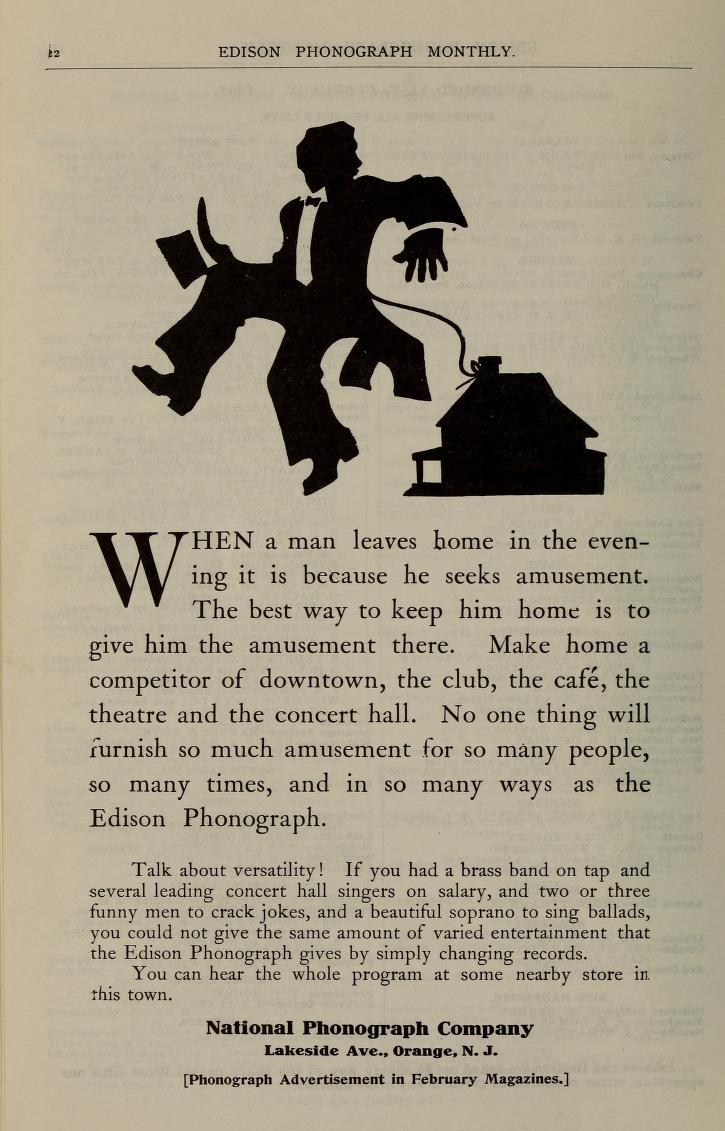
"Make home a competitor of downtown,
the club, the café, the theatre and the concert hall."
The Edison Phonograph Monthly,
February 1907
S.C. Gilfillan, in 1912
said this about "The Future Home Theatre":
"The home theater,
in contrast to most modern developements, will tend powerfully to
preserve the home, as the newspaper has by superseding the Athenian
barbershop, the Roman forum and the Queen Anne coffee house. And
to those who live in small towns and the country the home theater
will be a minister of life." The
Independent, October 17, 1912, p. 891
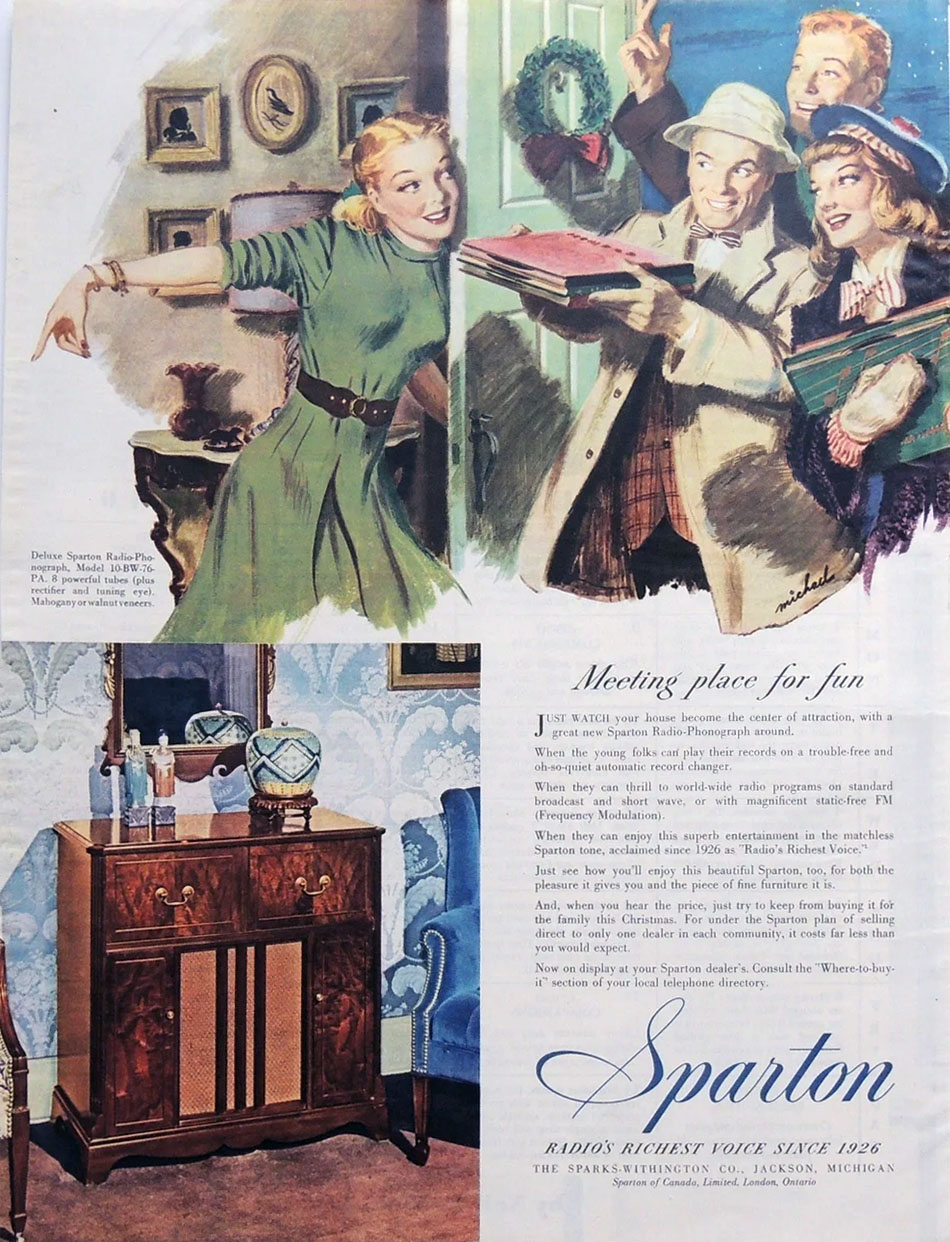
The Meeting Place for Fun
- Sparton Radio-Phonograph, 1946
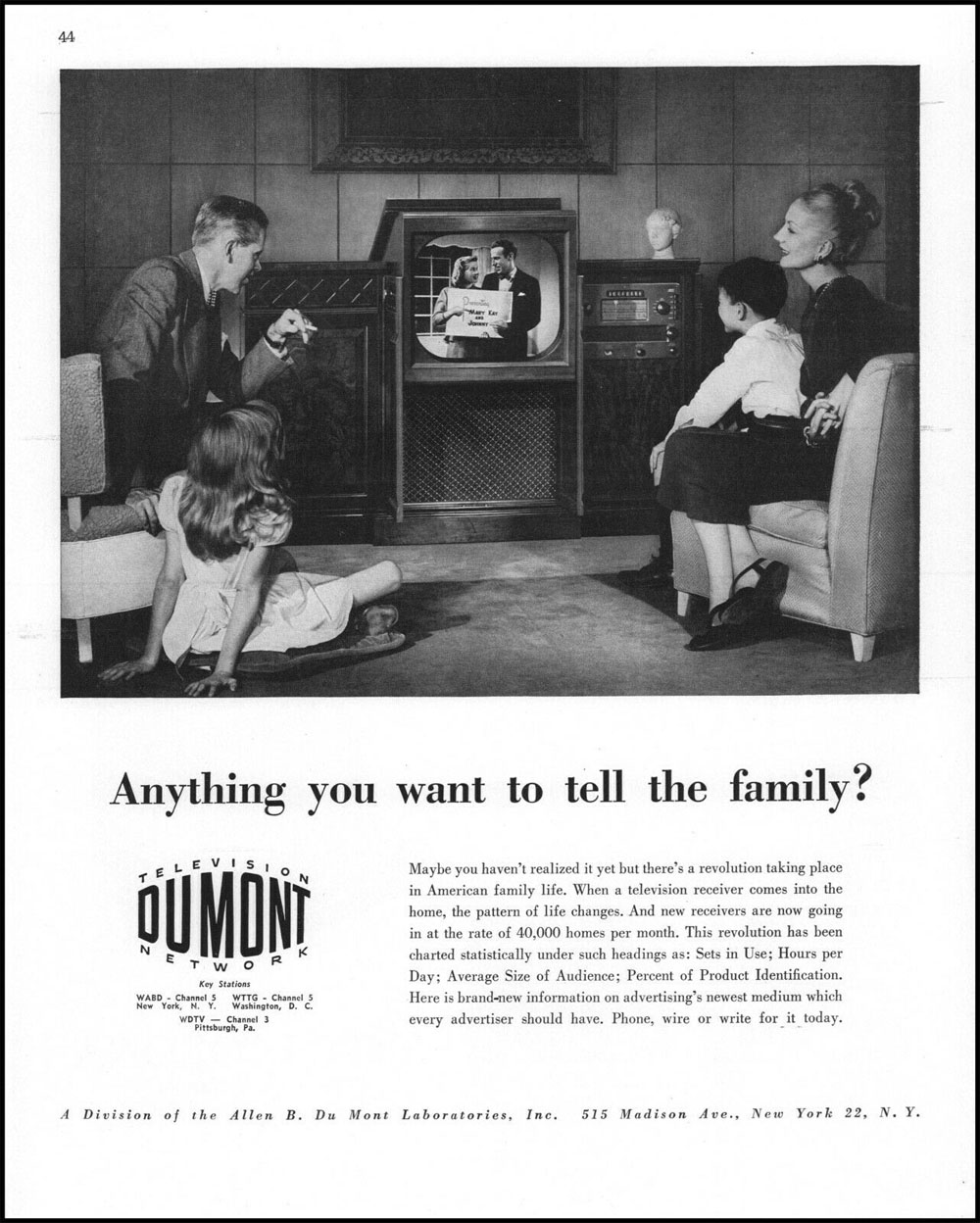
"There's a revolution
taking place in American family life."1948 DuMont Television
Ad
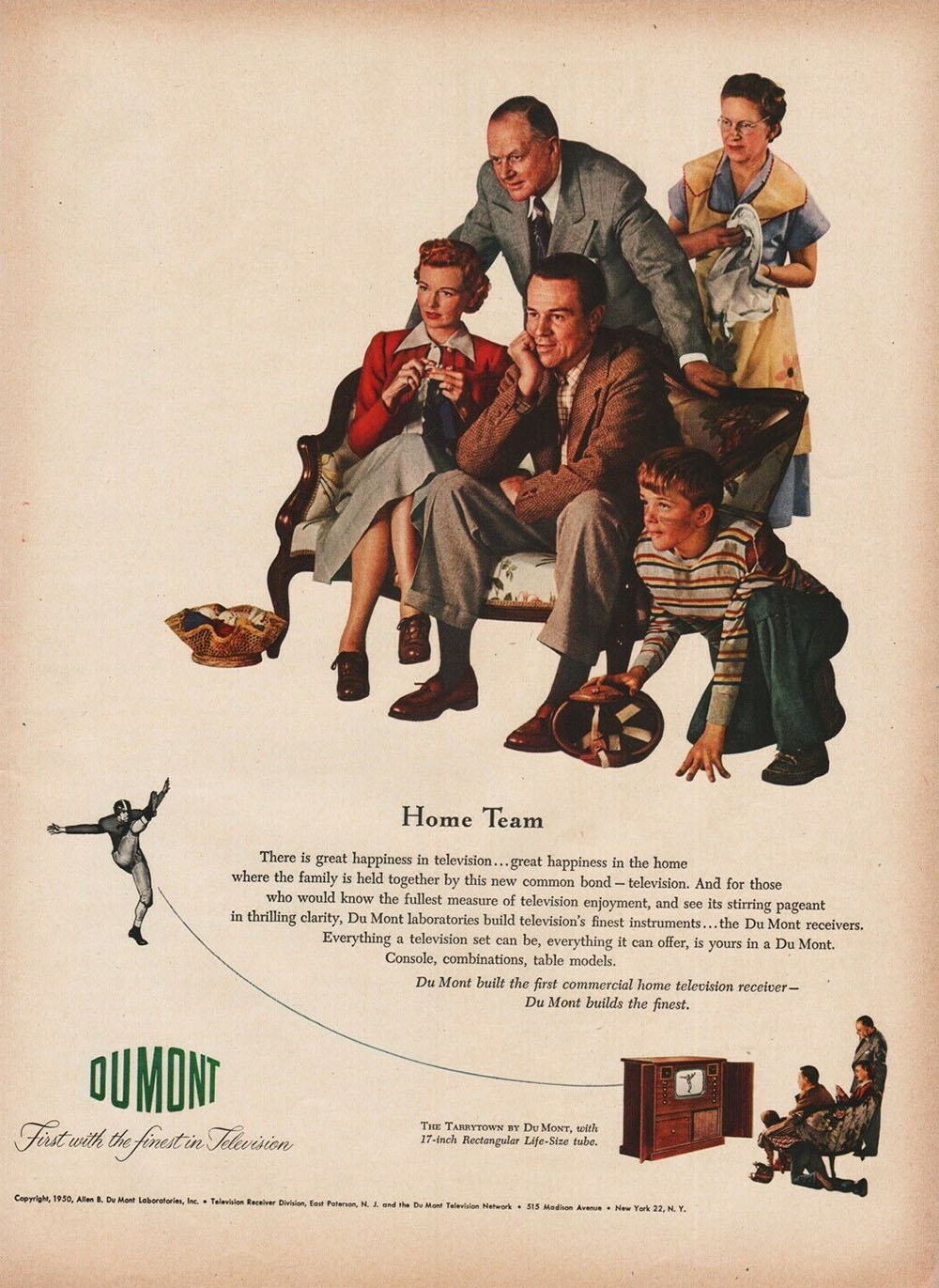
There is great happiness in the home
where the family is held together by this new common bond - television.
Dumont Television ad, 1950
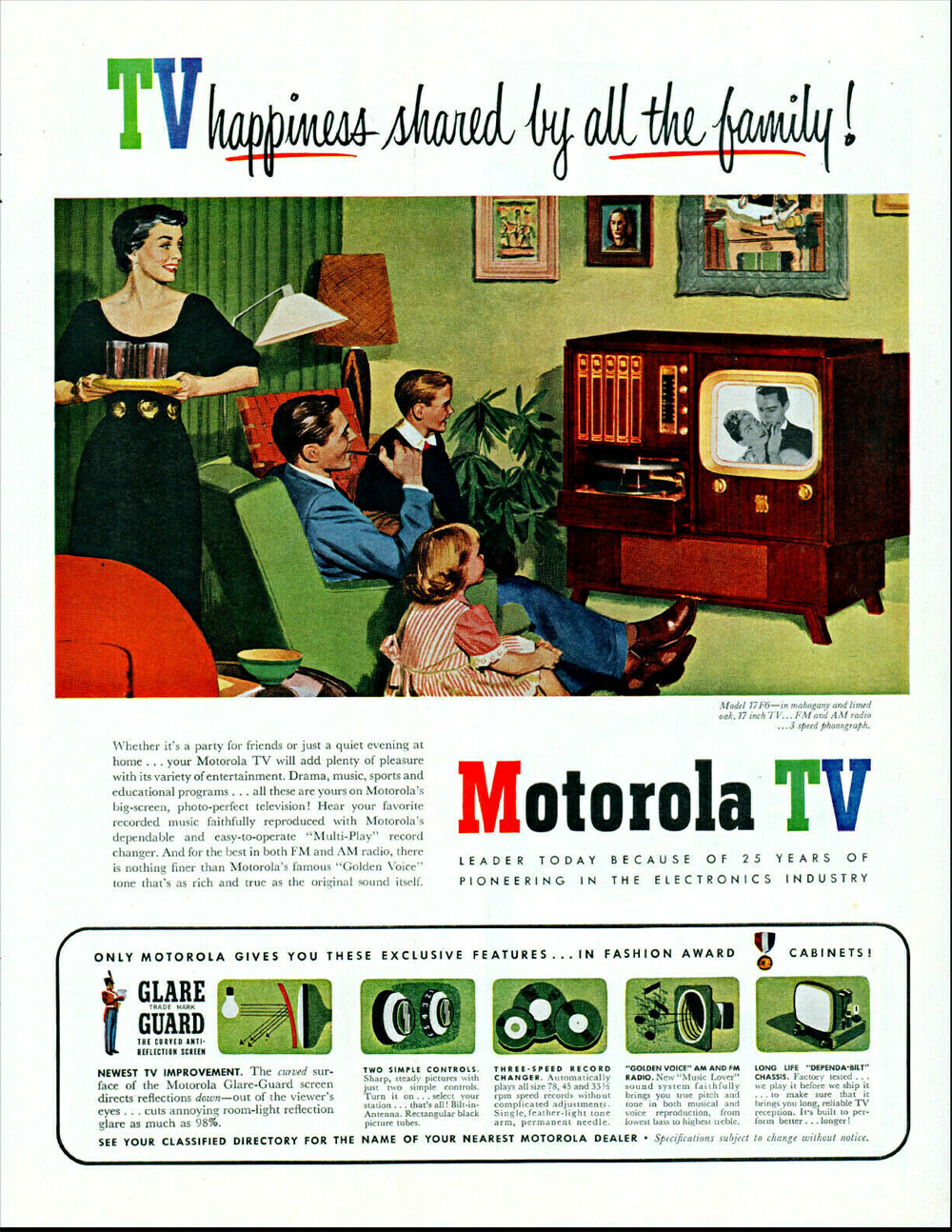
TV Happiness Shared by the Family,
Motorola's combination TV, AM/FM radio and 3 speed phonograph, 1951.
Motorola's "Golden Voice"
tone that's as rich and true as the original sound itself.

Phonographia
|
